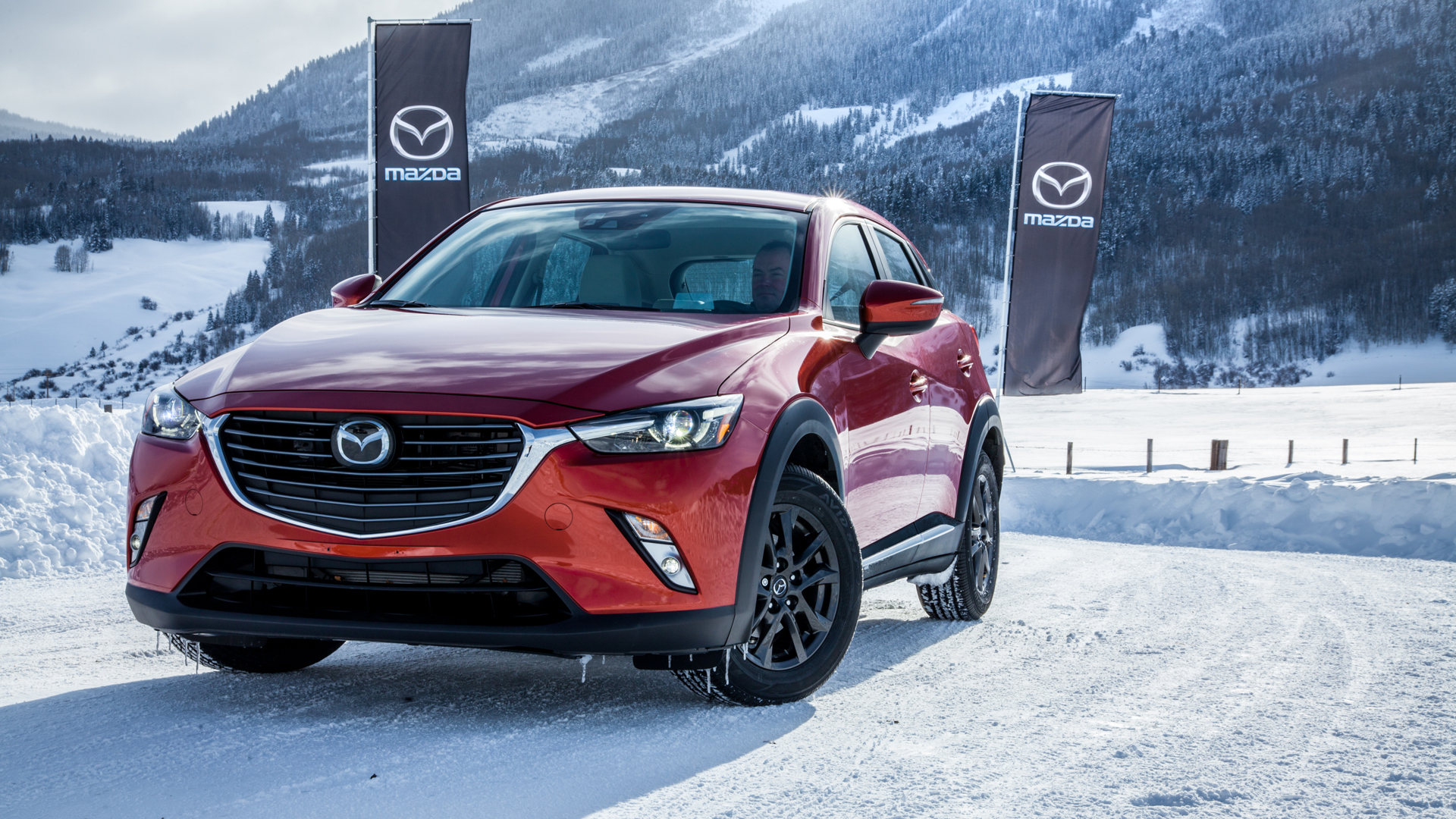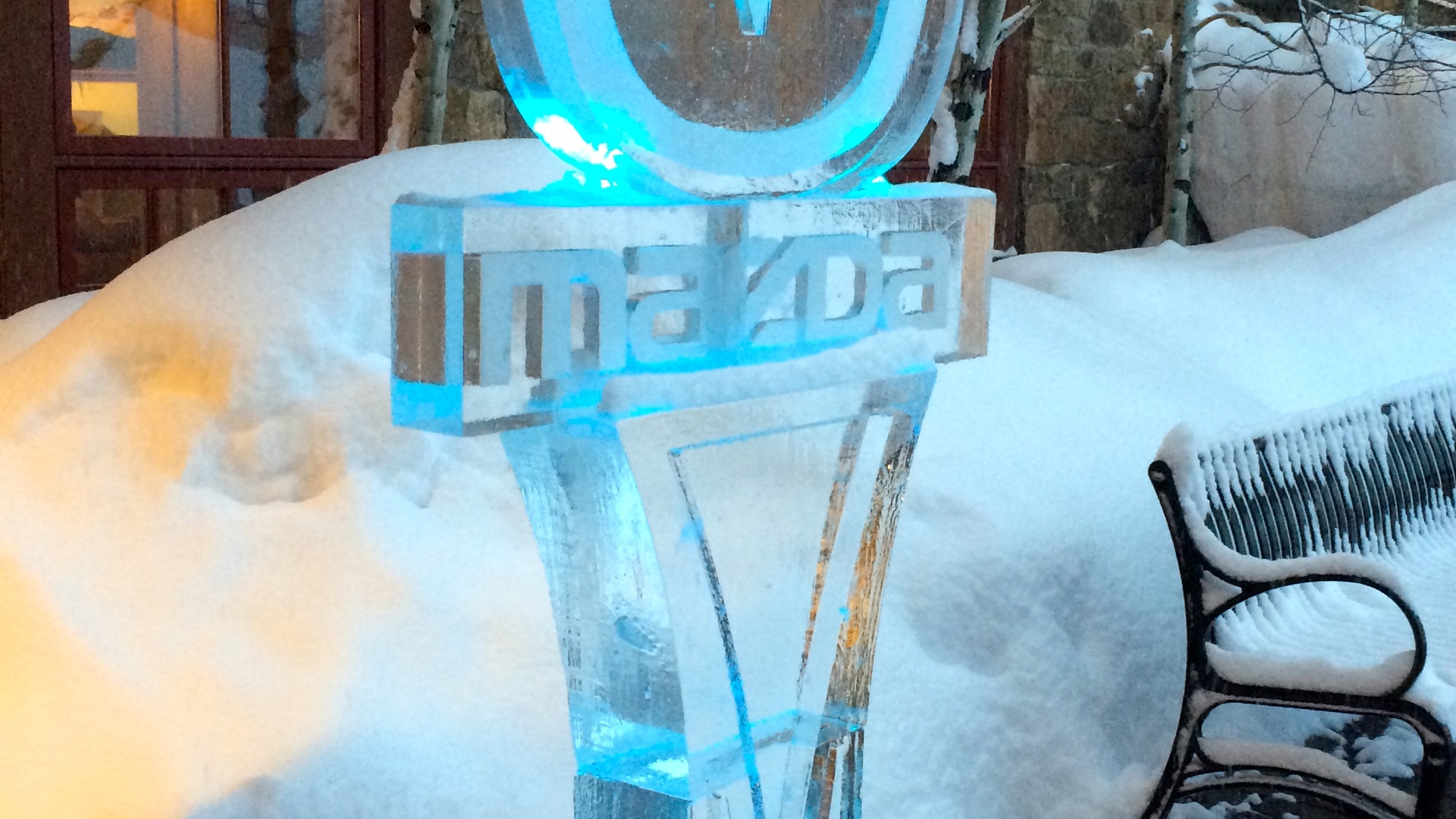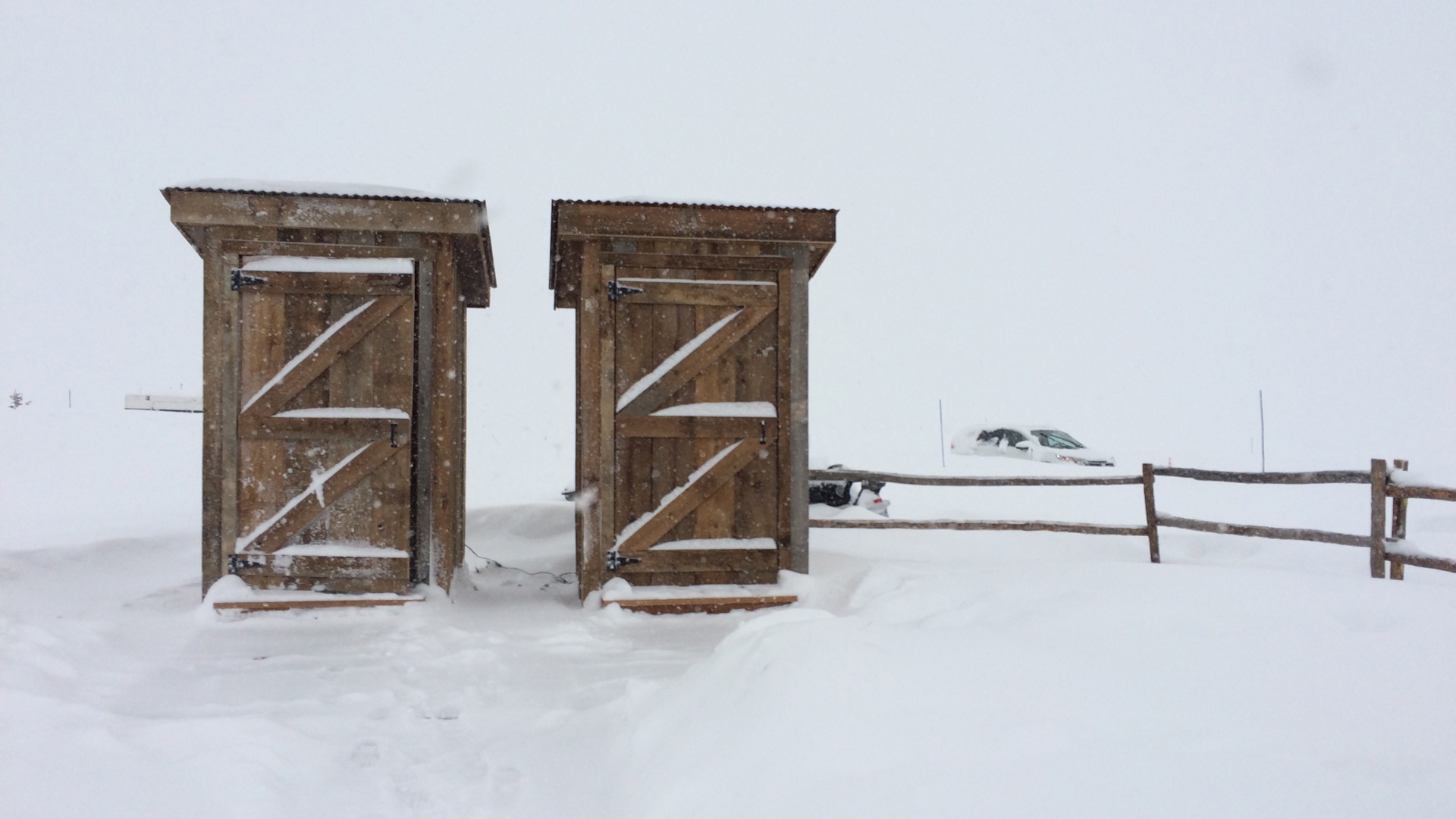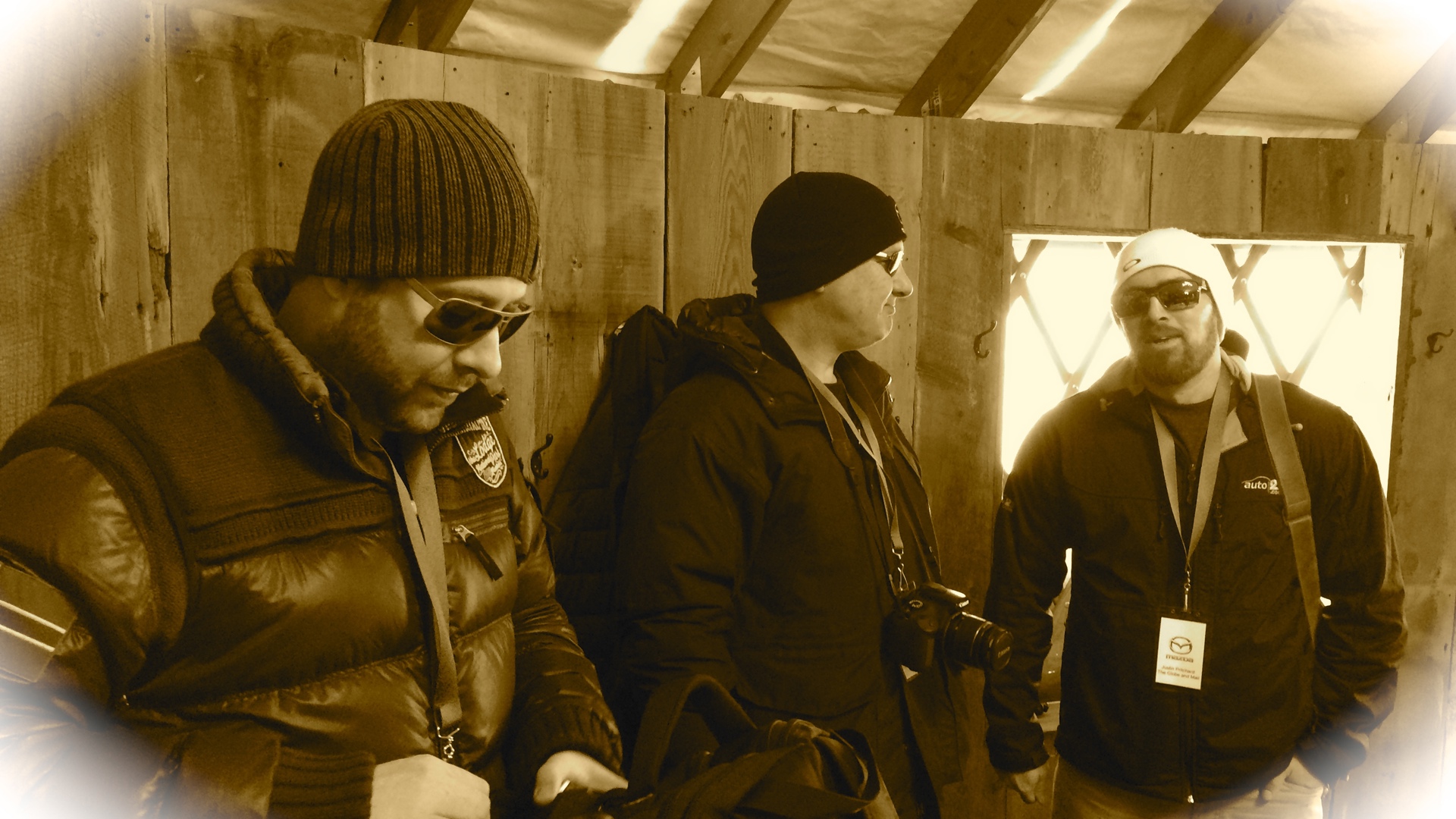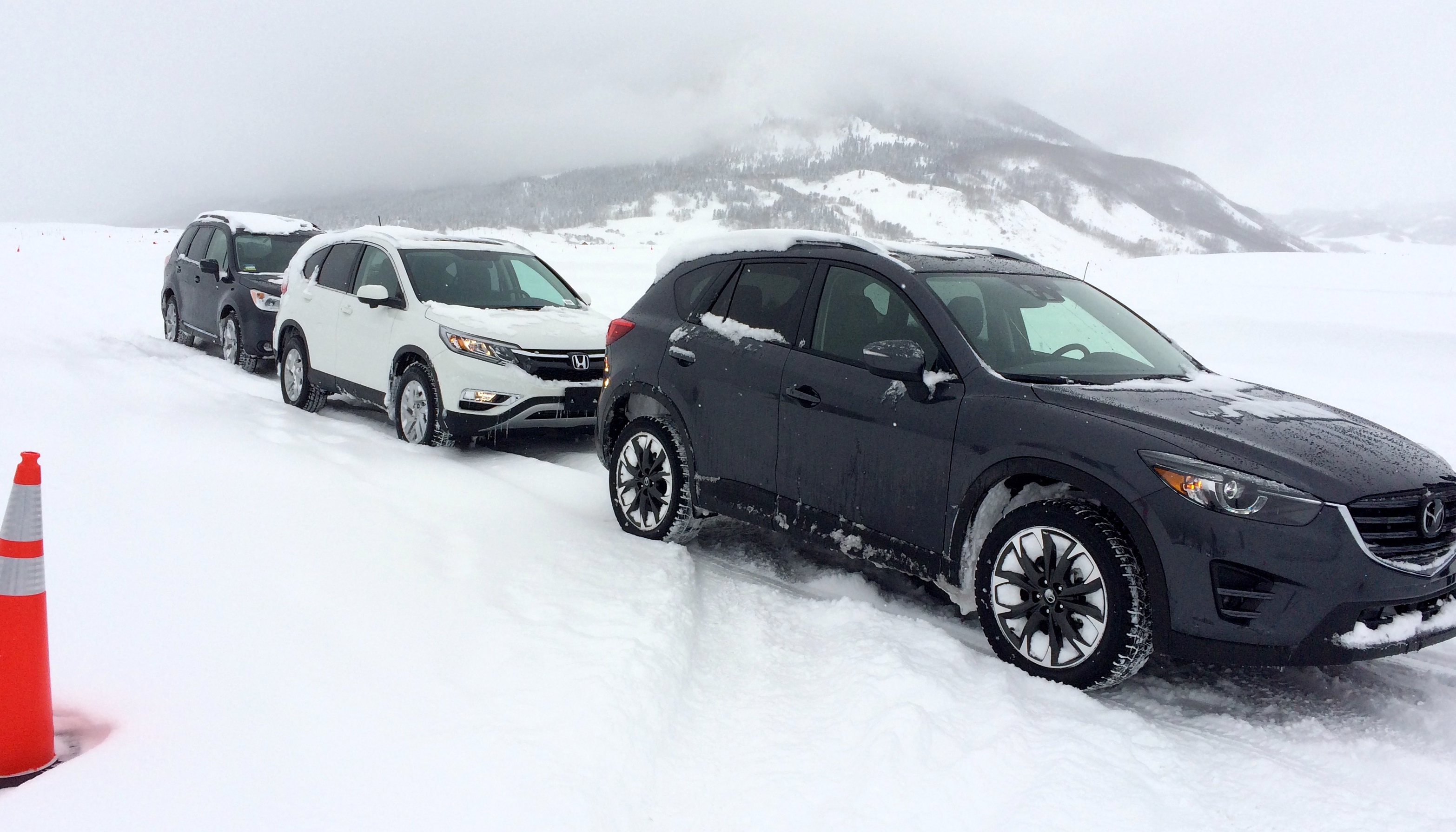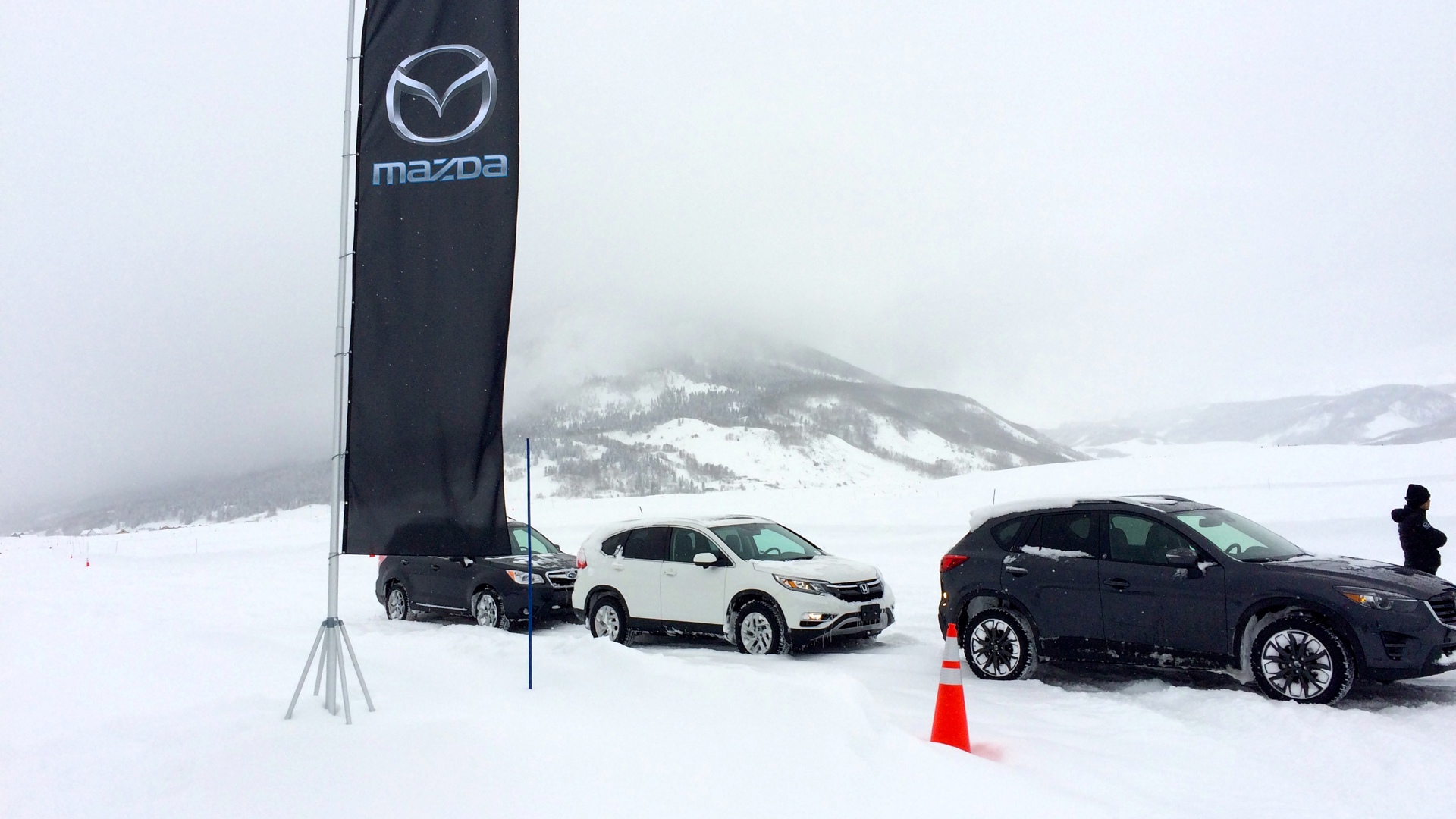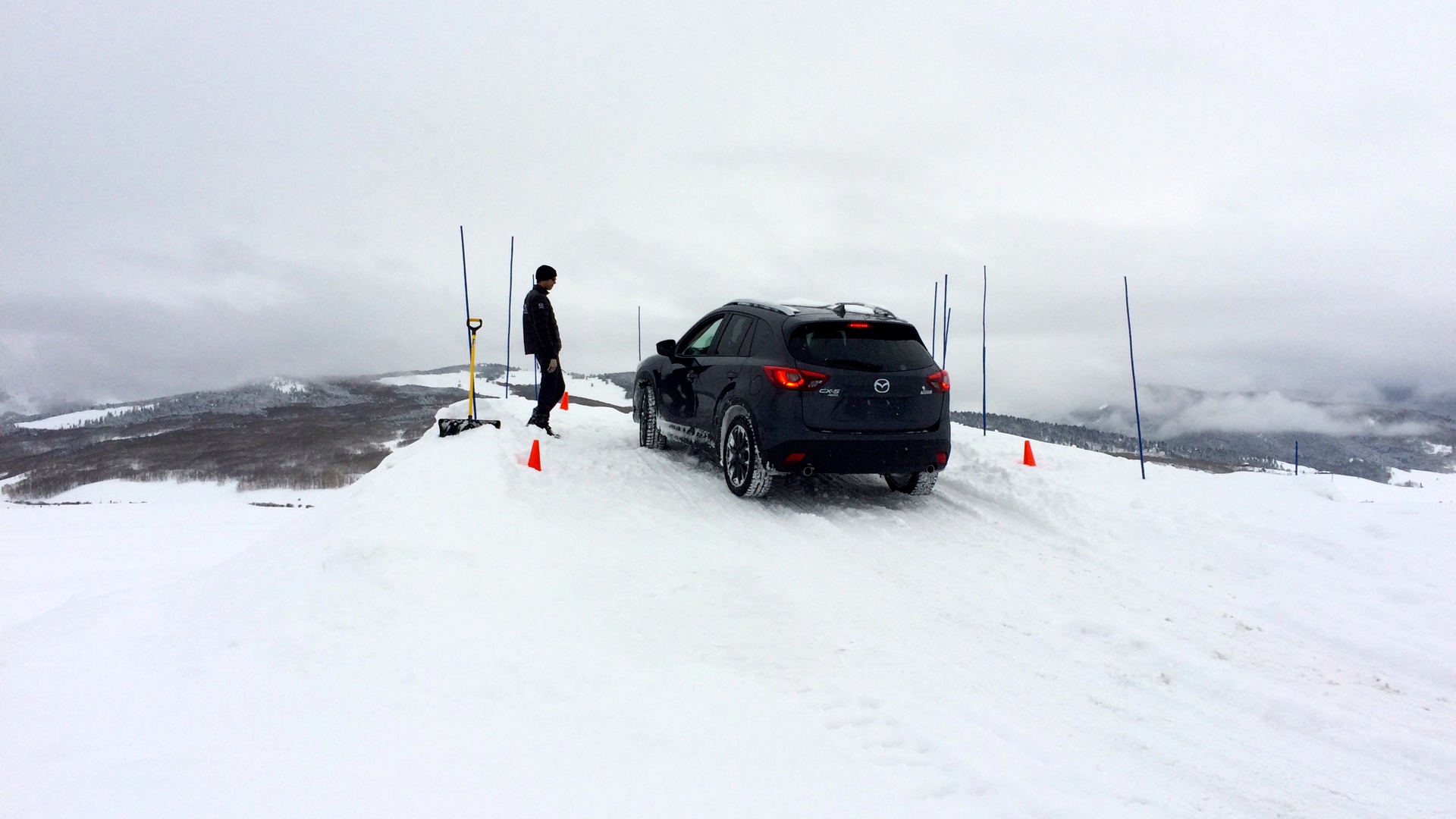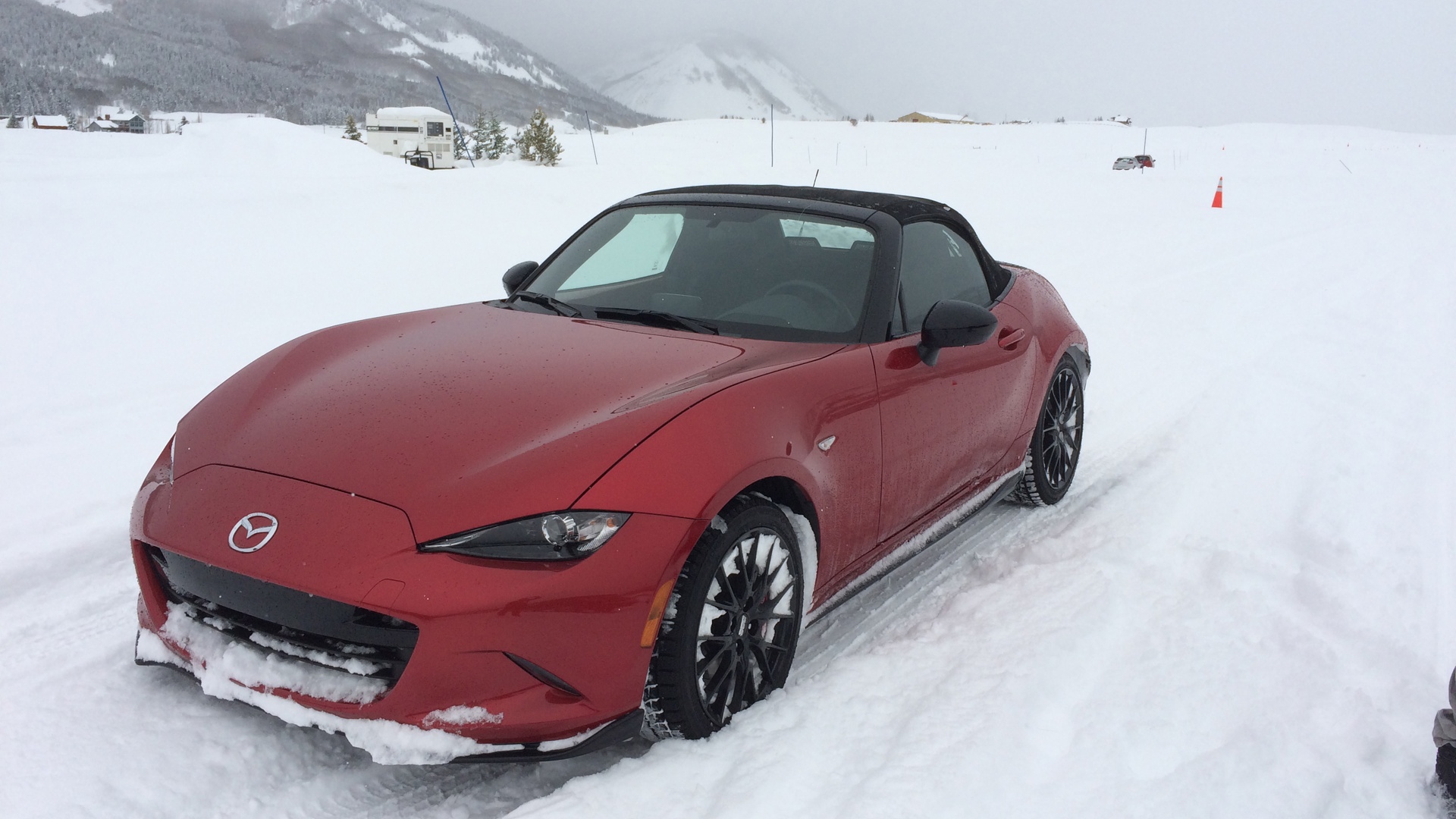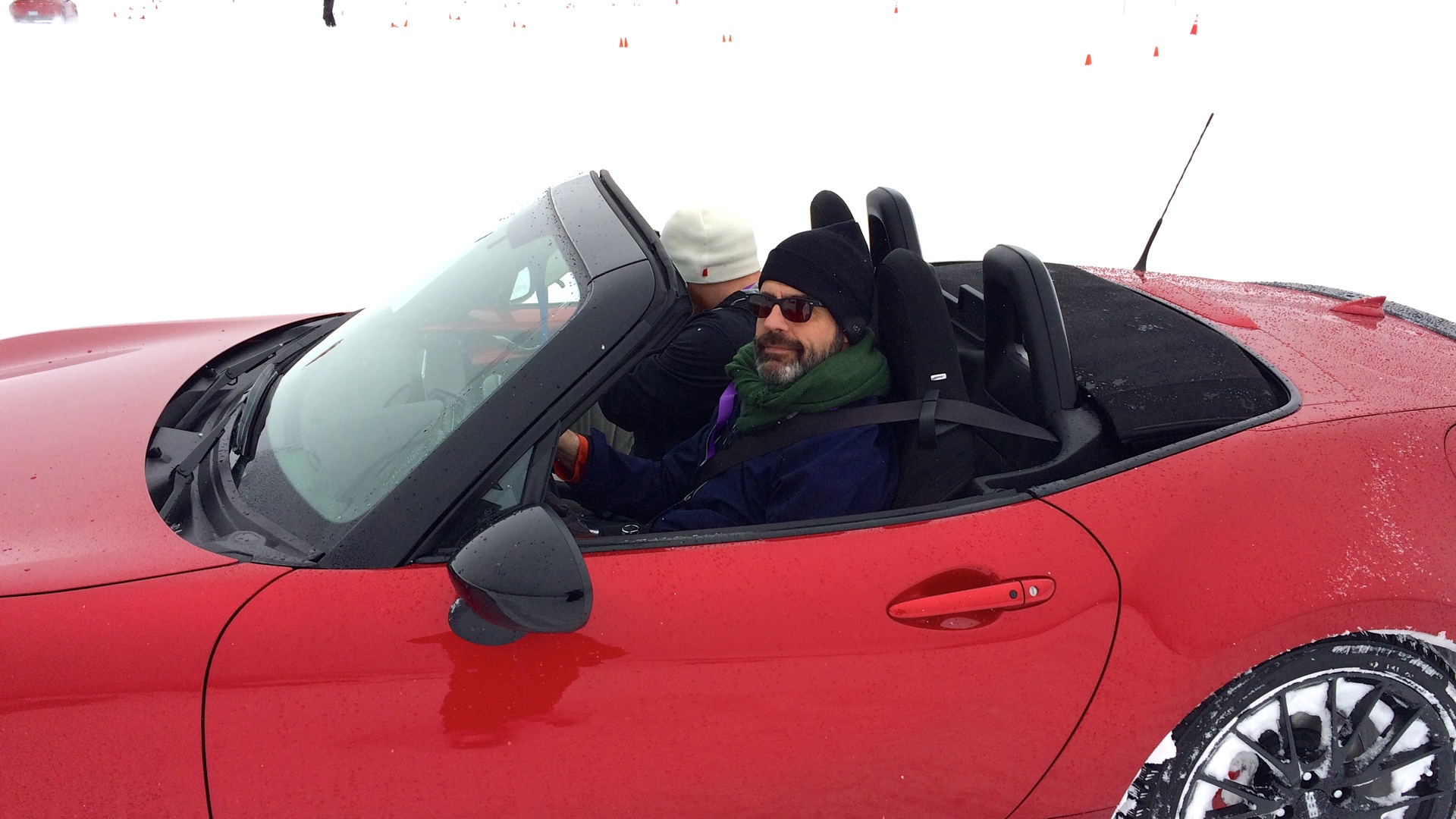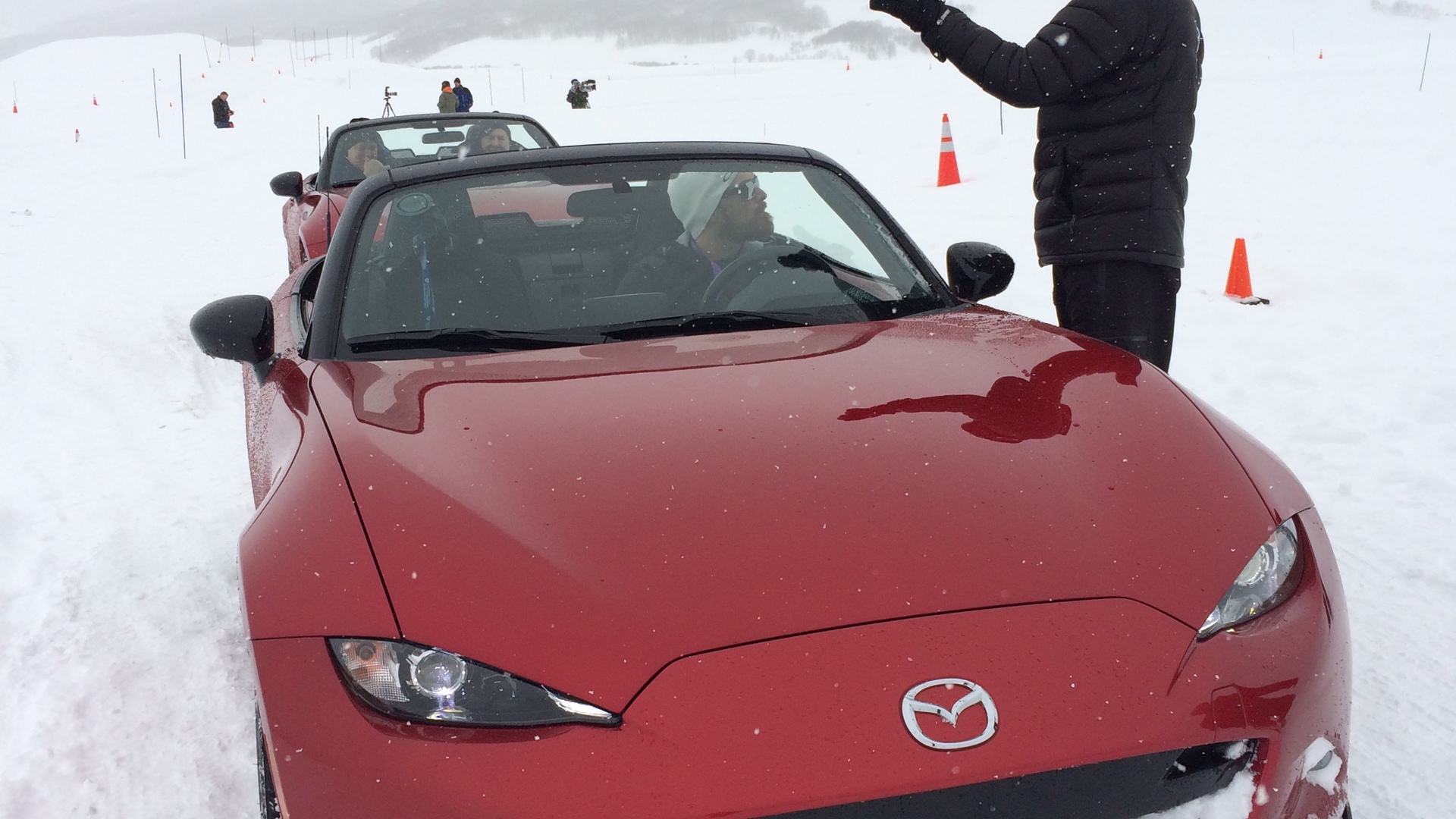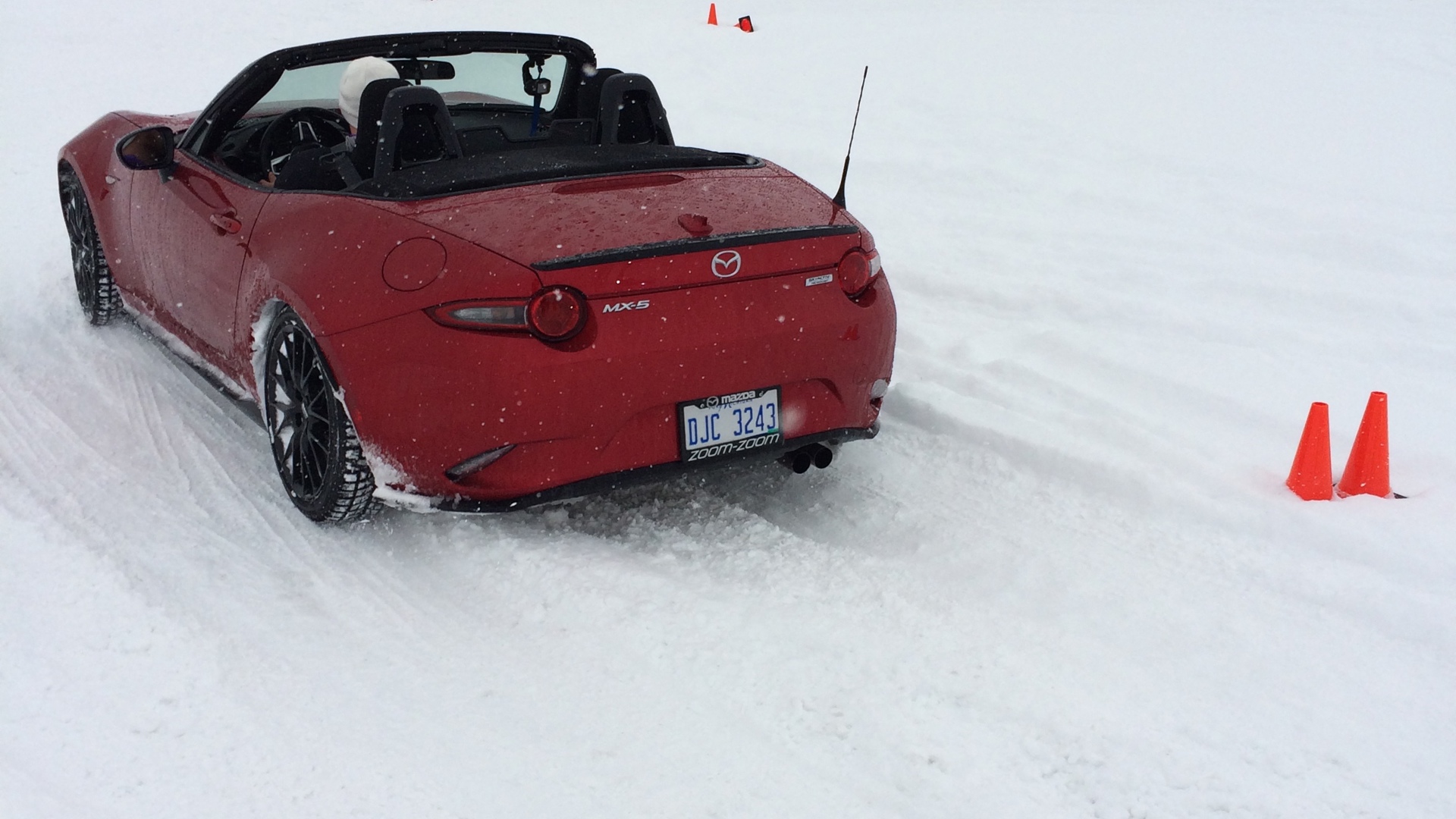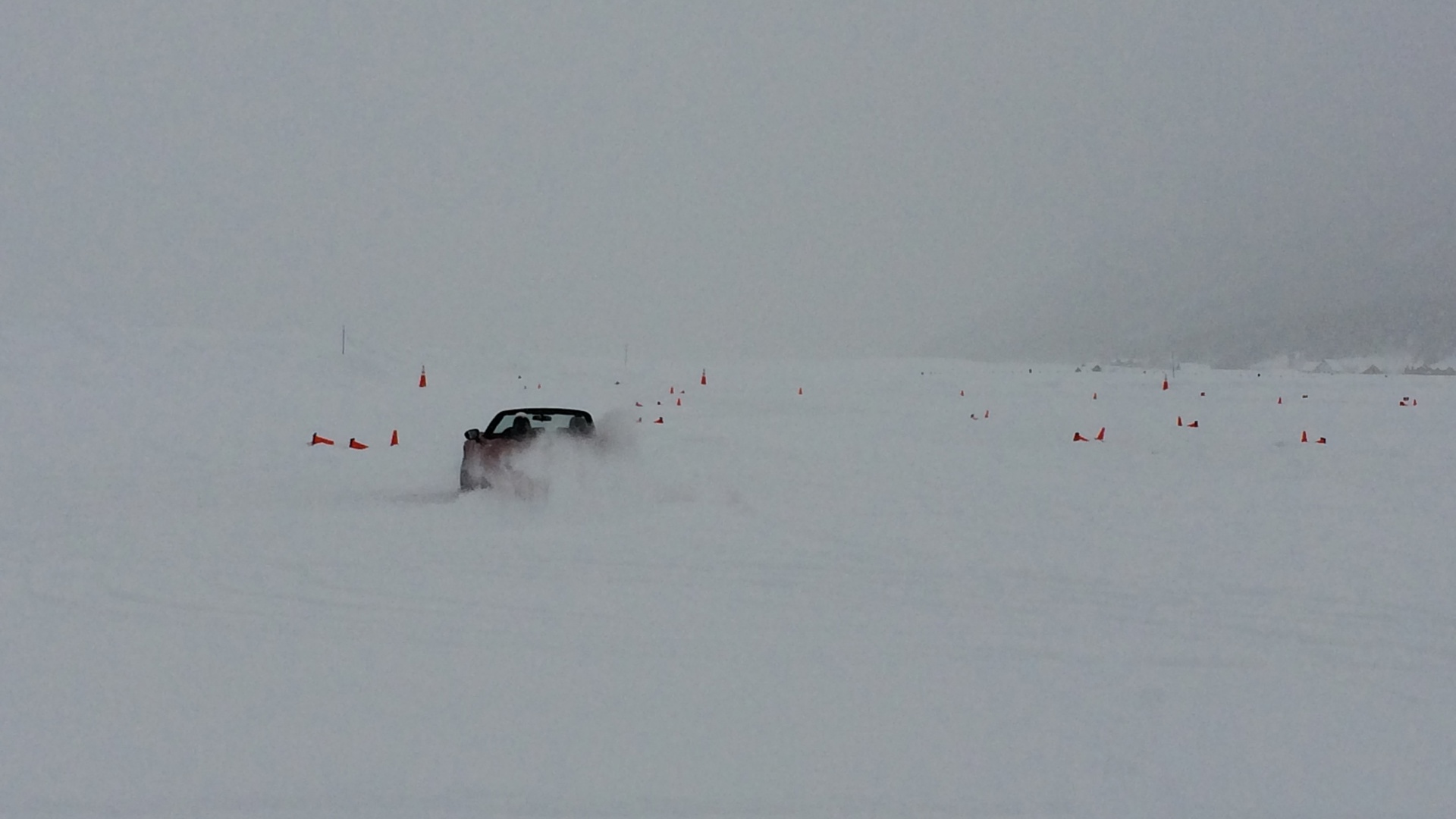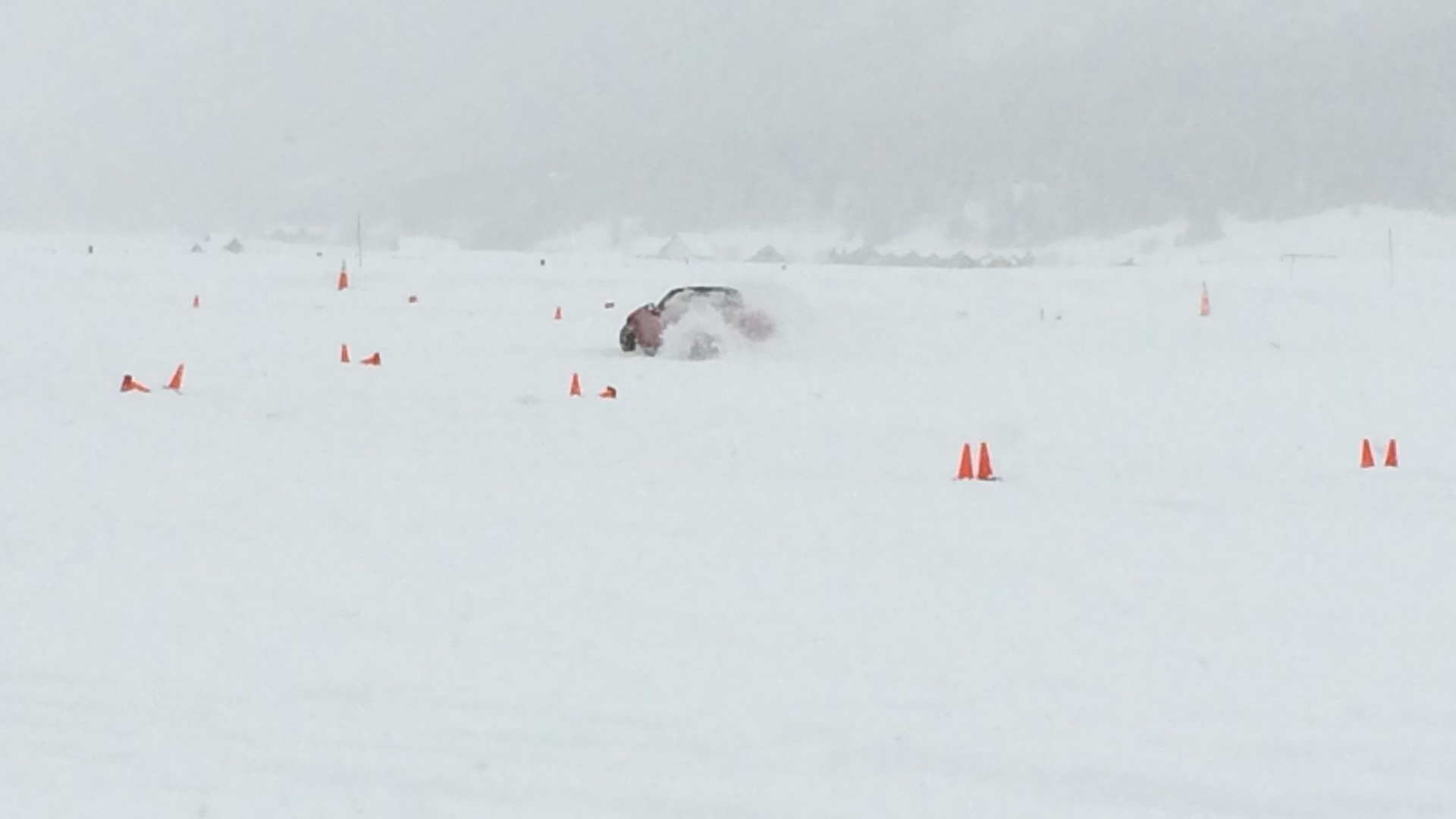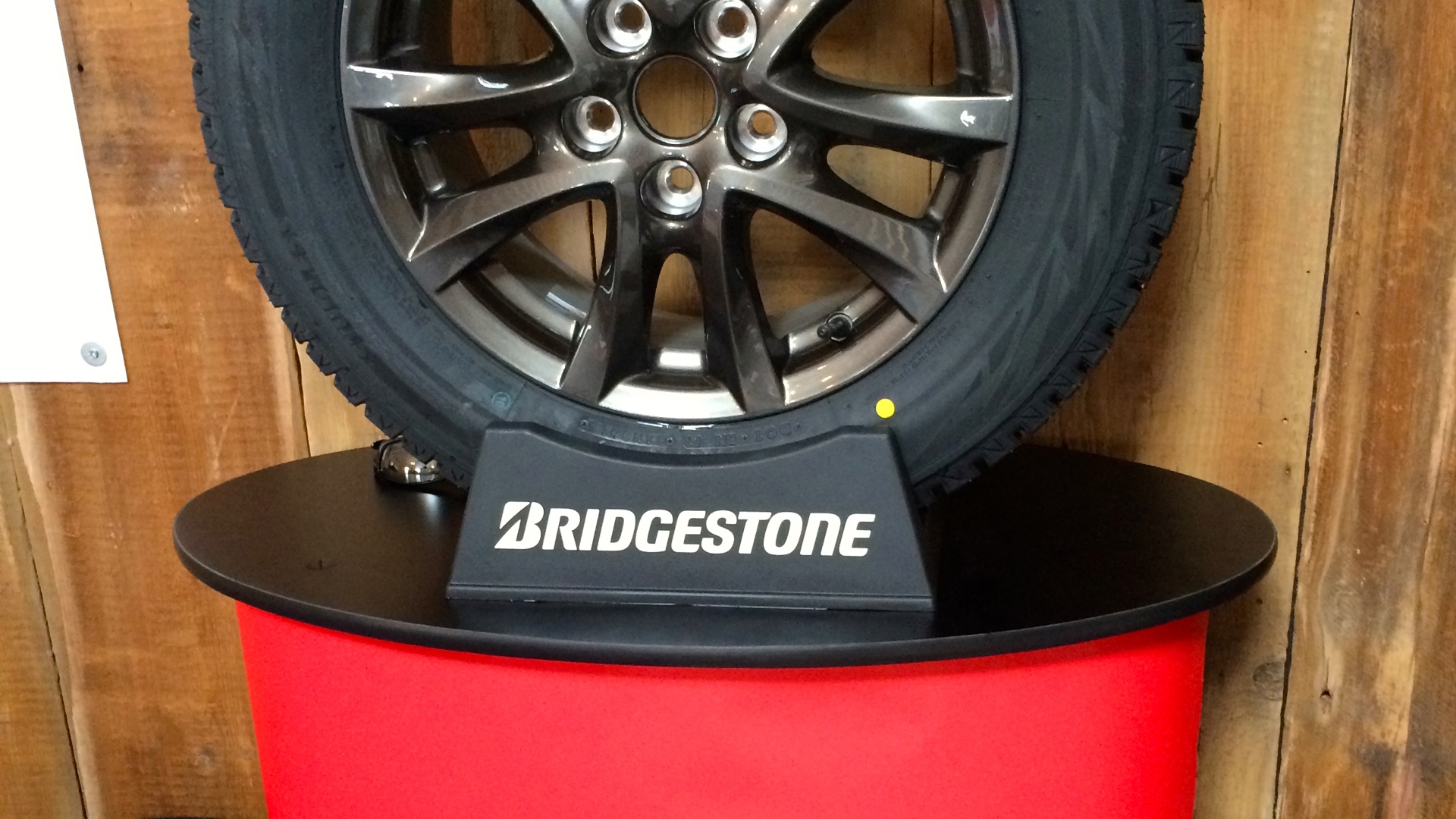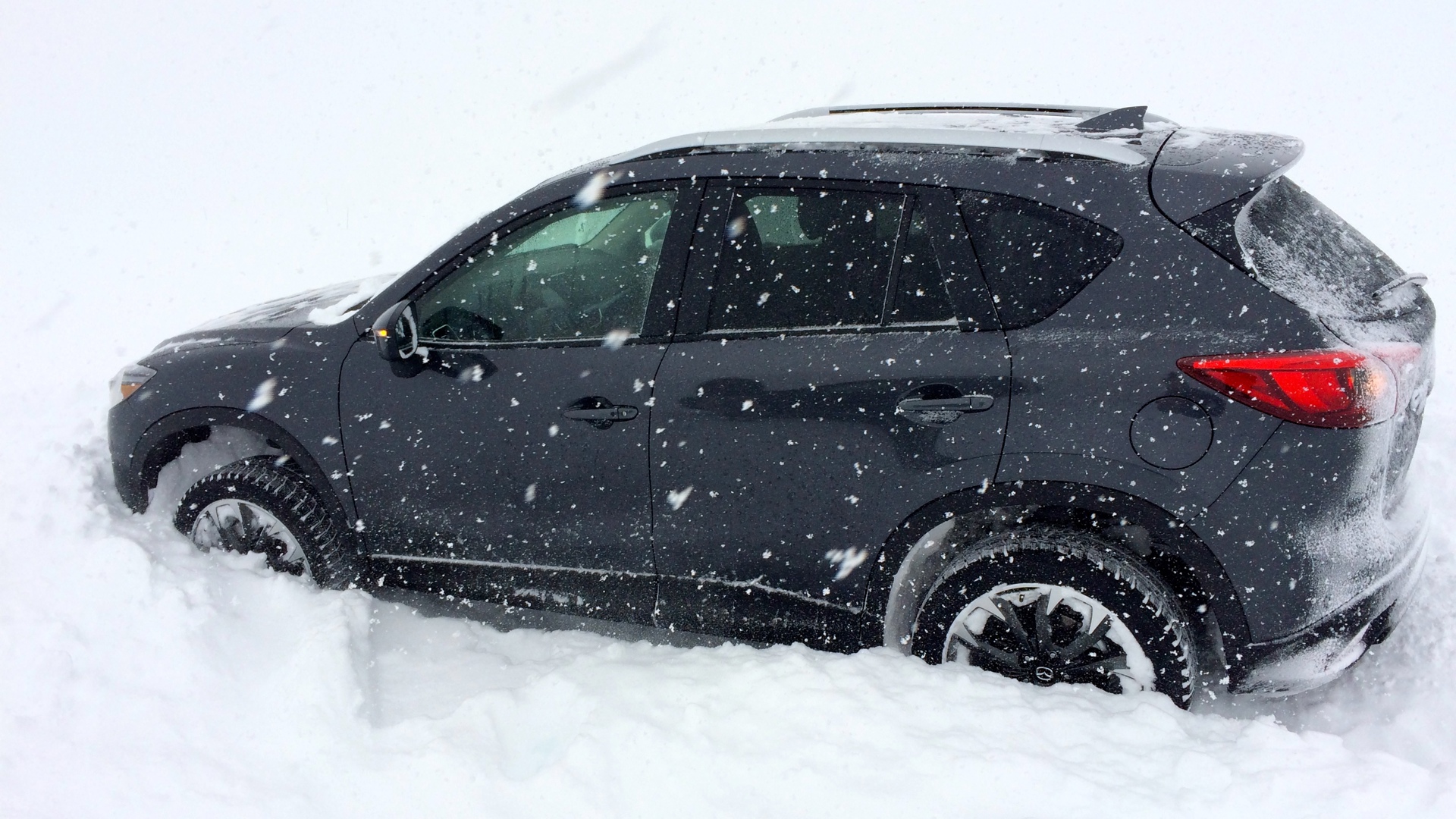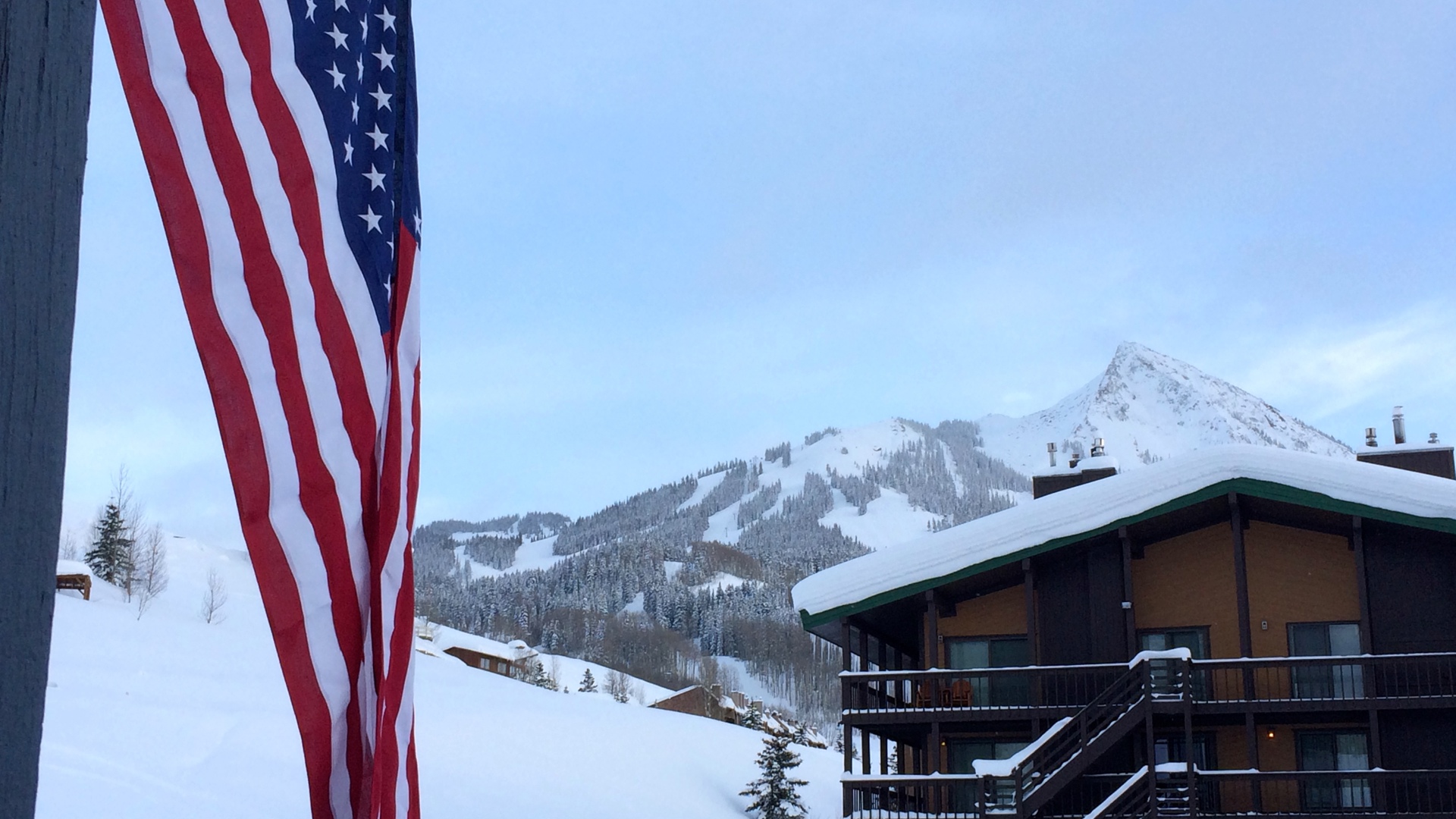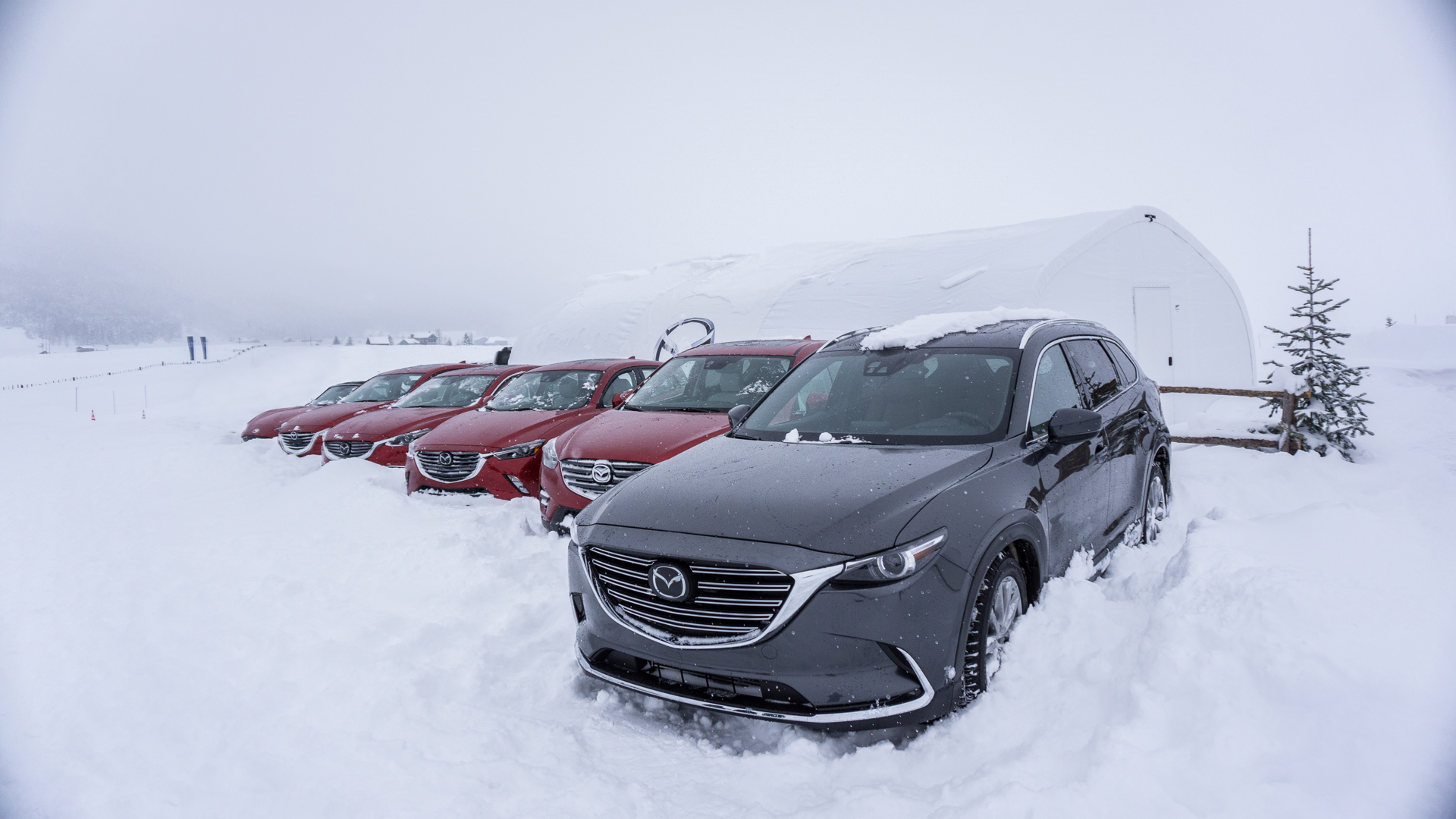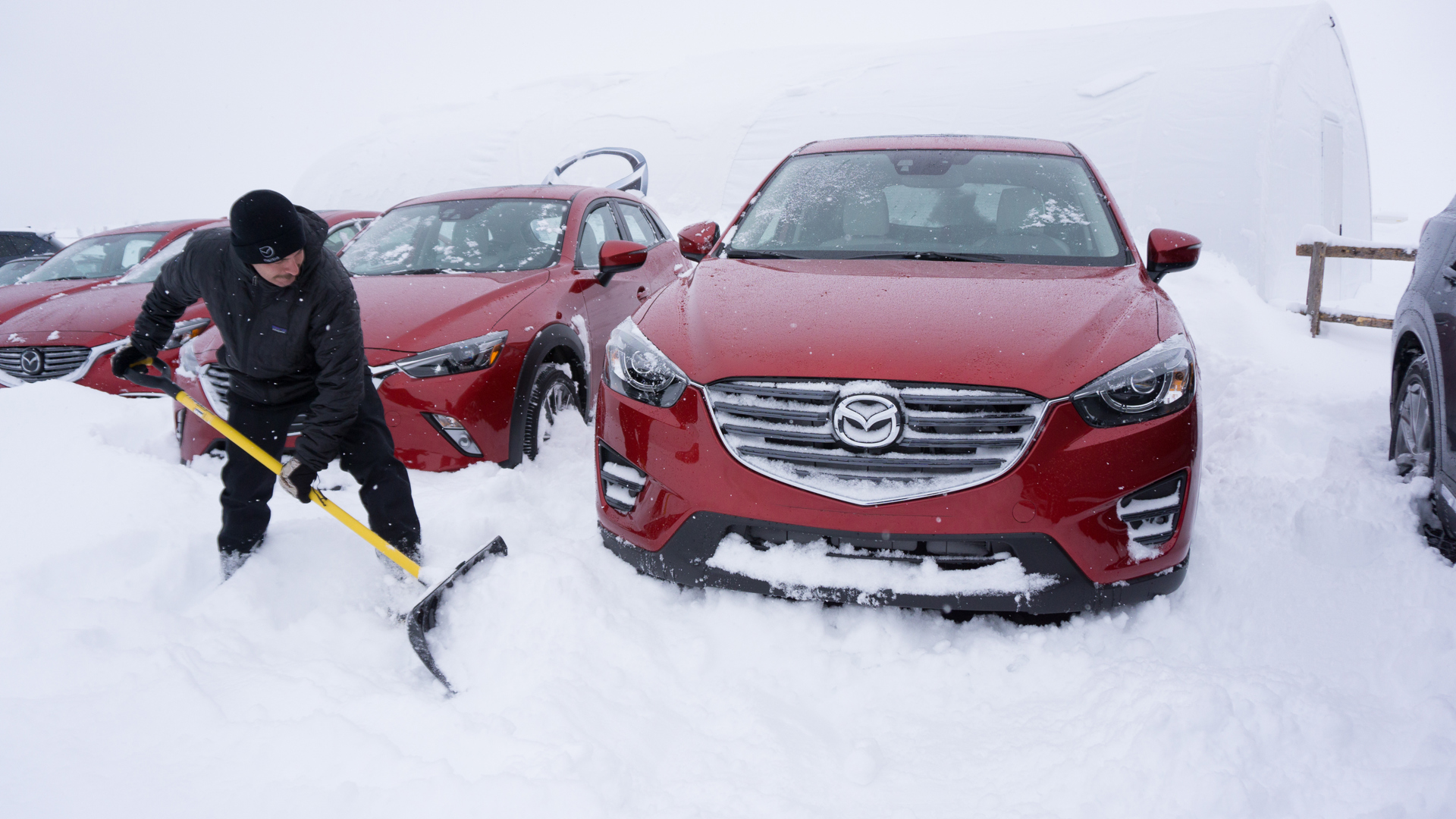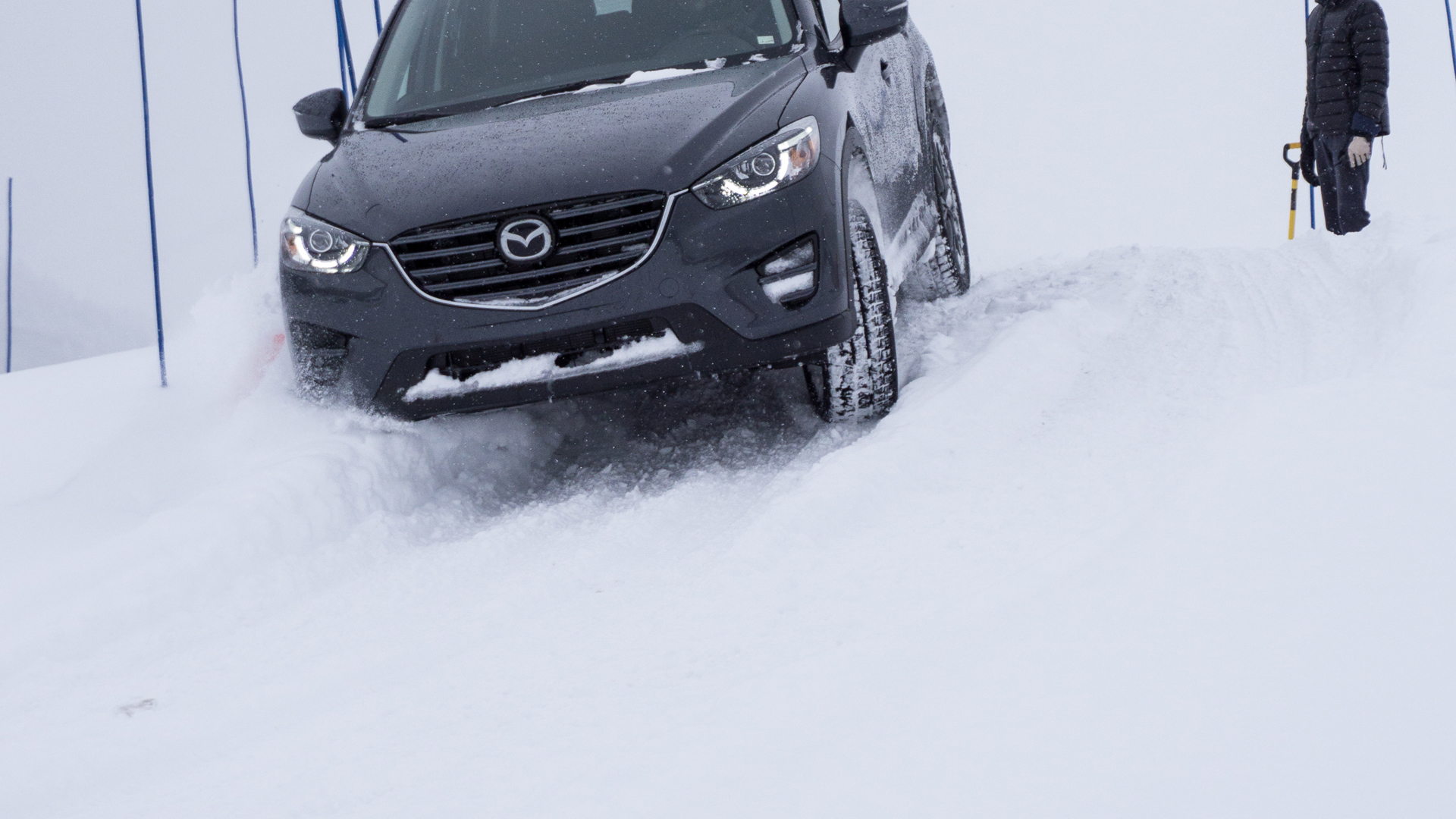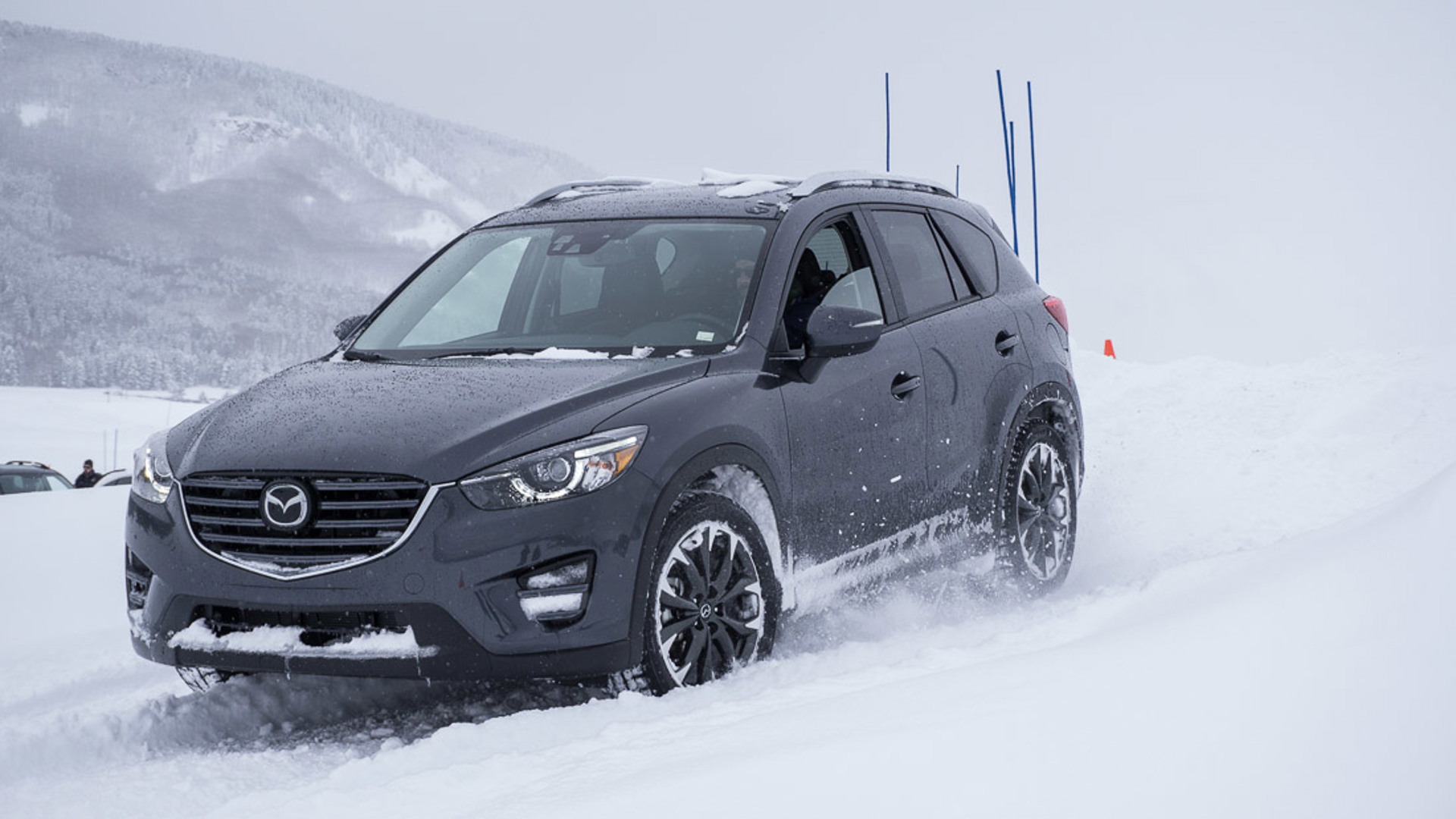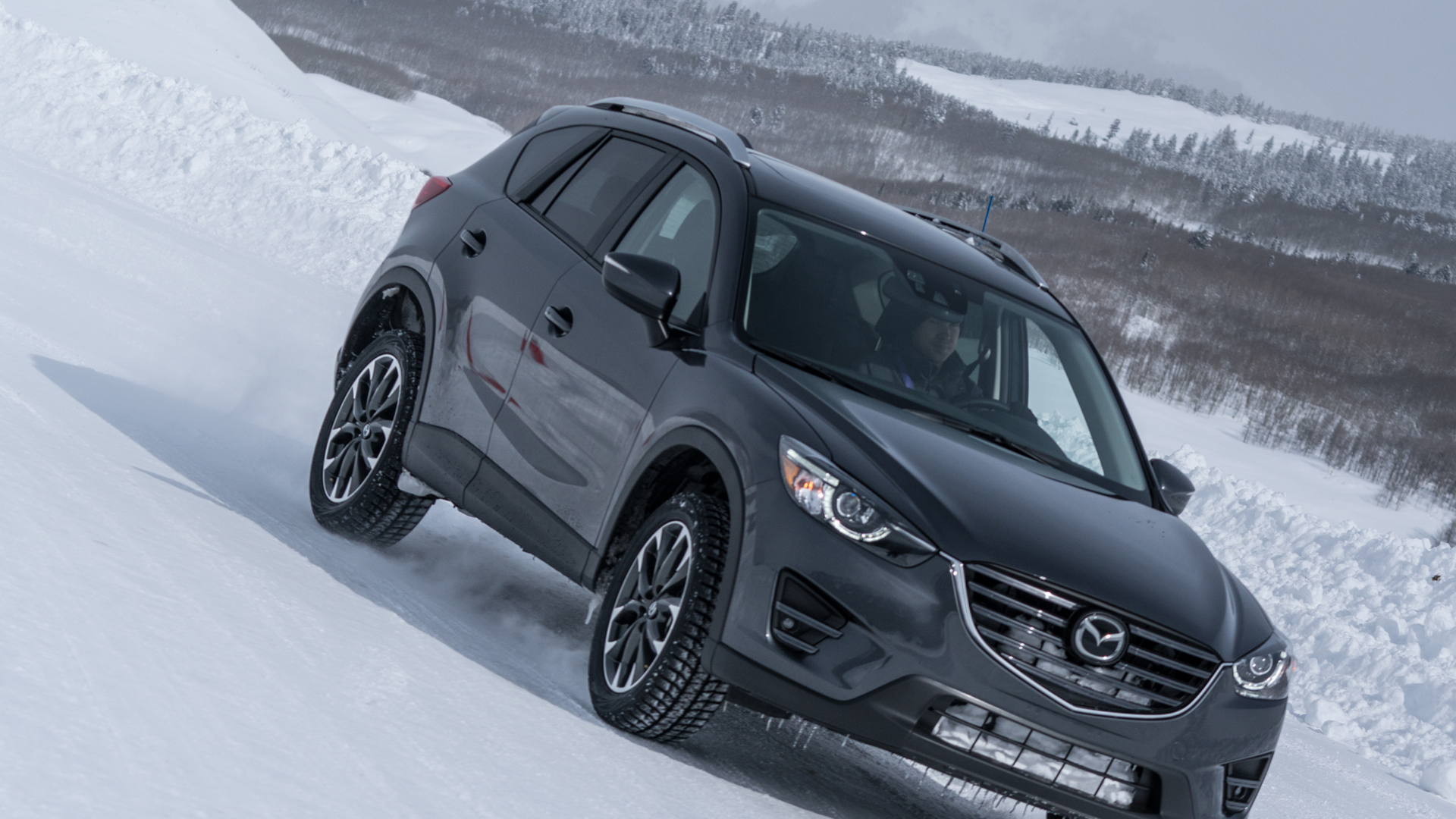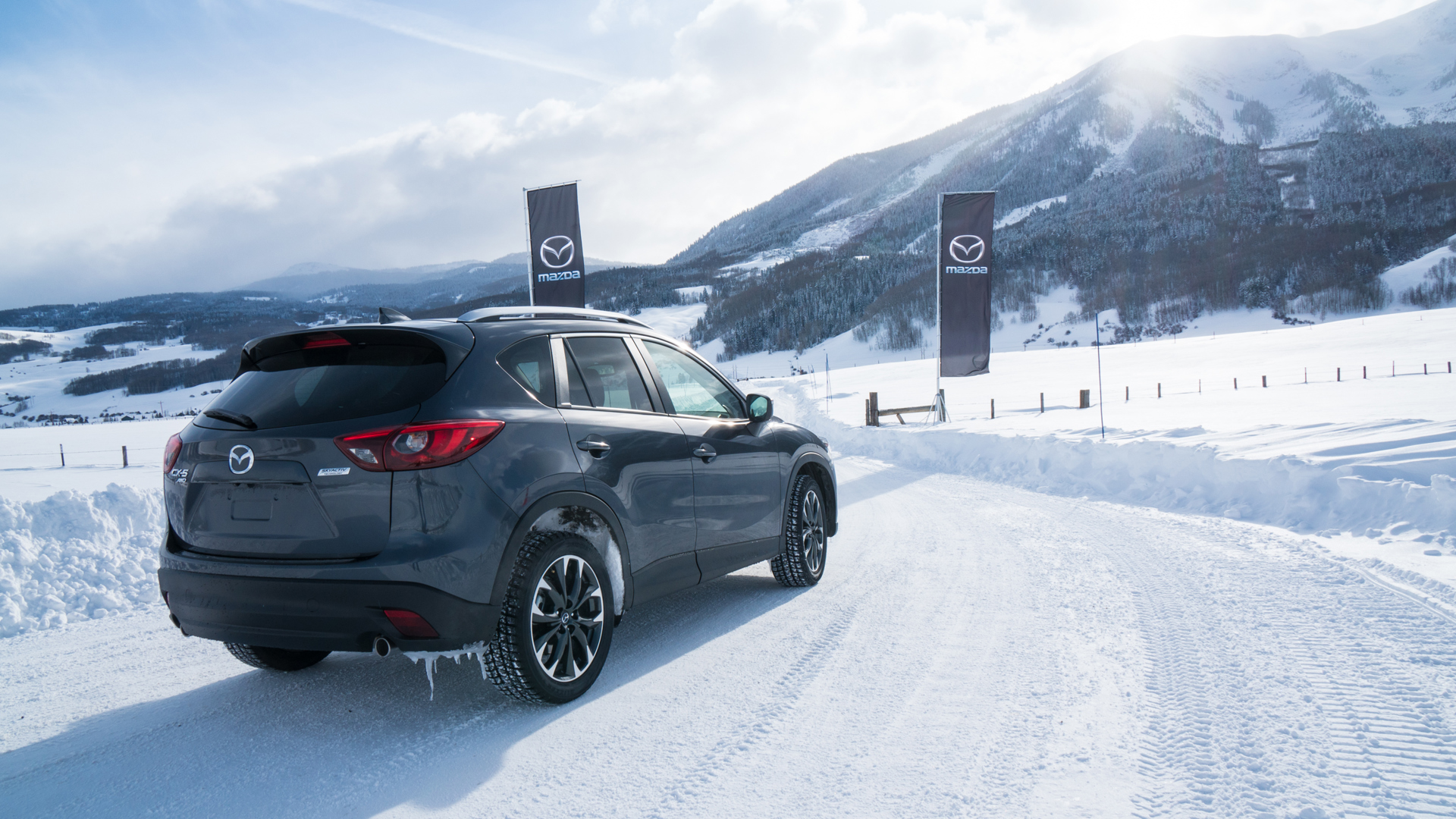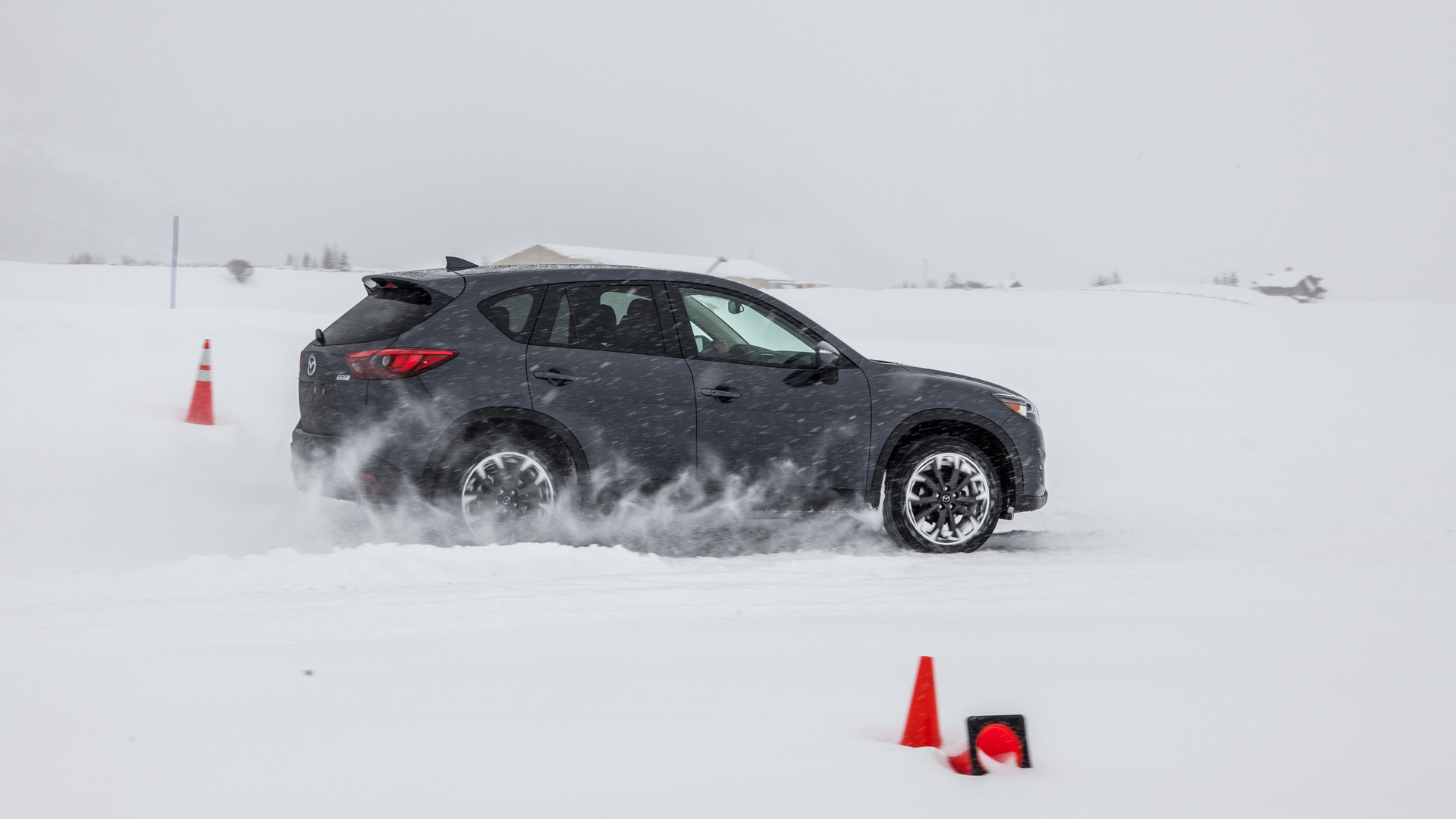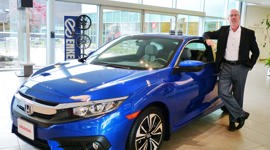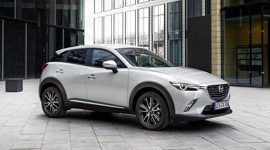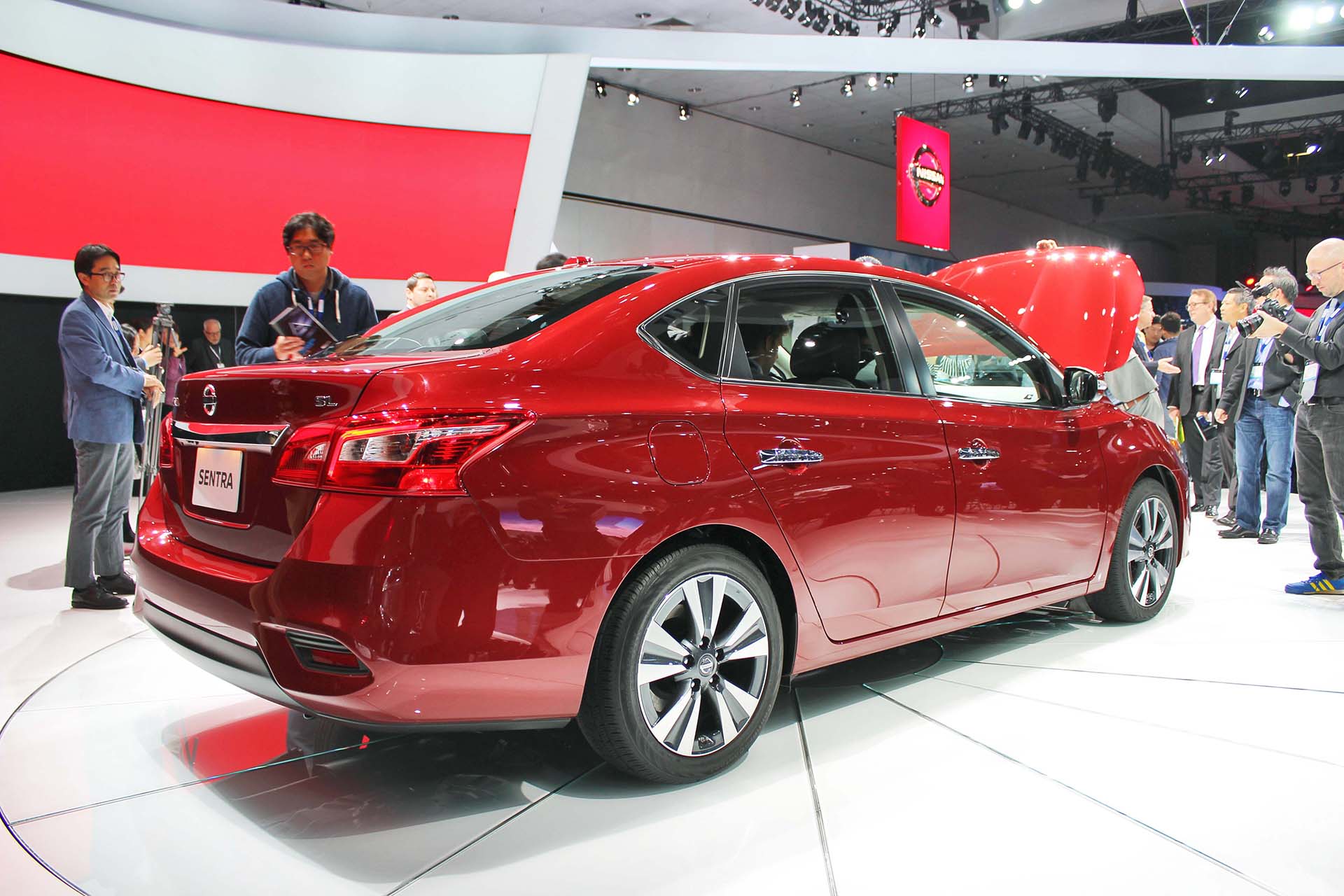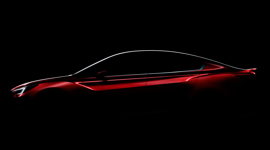Colorado, 9,000 ft above sea level – Remember that scene when Han Solo emerges from a sweeping white hurricane to save Luke from certain frozen death? Now picture two seconds earlier and – instead of that waggish space bandit astride his tauntaun – a diagonally drifting 2016 Mazda CX-5 erupts heroically from the thrusting whiteness, peopled by two maniacally grinning Jack Torrances, both likely suffering more than a touch of hypoxia.
“And cut! Do it again, please.”
It’s the inaugural day of the first-ever Mazda Ice Academy and it’s been snowing for over two days. The drifting CX-5’s Torrances are conducting a serious scientific experiment, comparing Mazda’s i-ACTIV all-wheel-drive system to those of its compatriot competitors, the Subaru Forester and Honda CR-V. Our mission? Actively notice those microseconds before all-wheel drive (AWD) technologies engage. Nearly all drivers are far slower than machines to sense and react. The slower drivers in this case are me, and fellow autoTRADER.ca contributor, Justin Pritchard.
Can we actually notice the difference between manufacturers’ AWD systems?
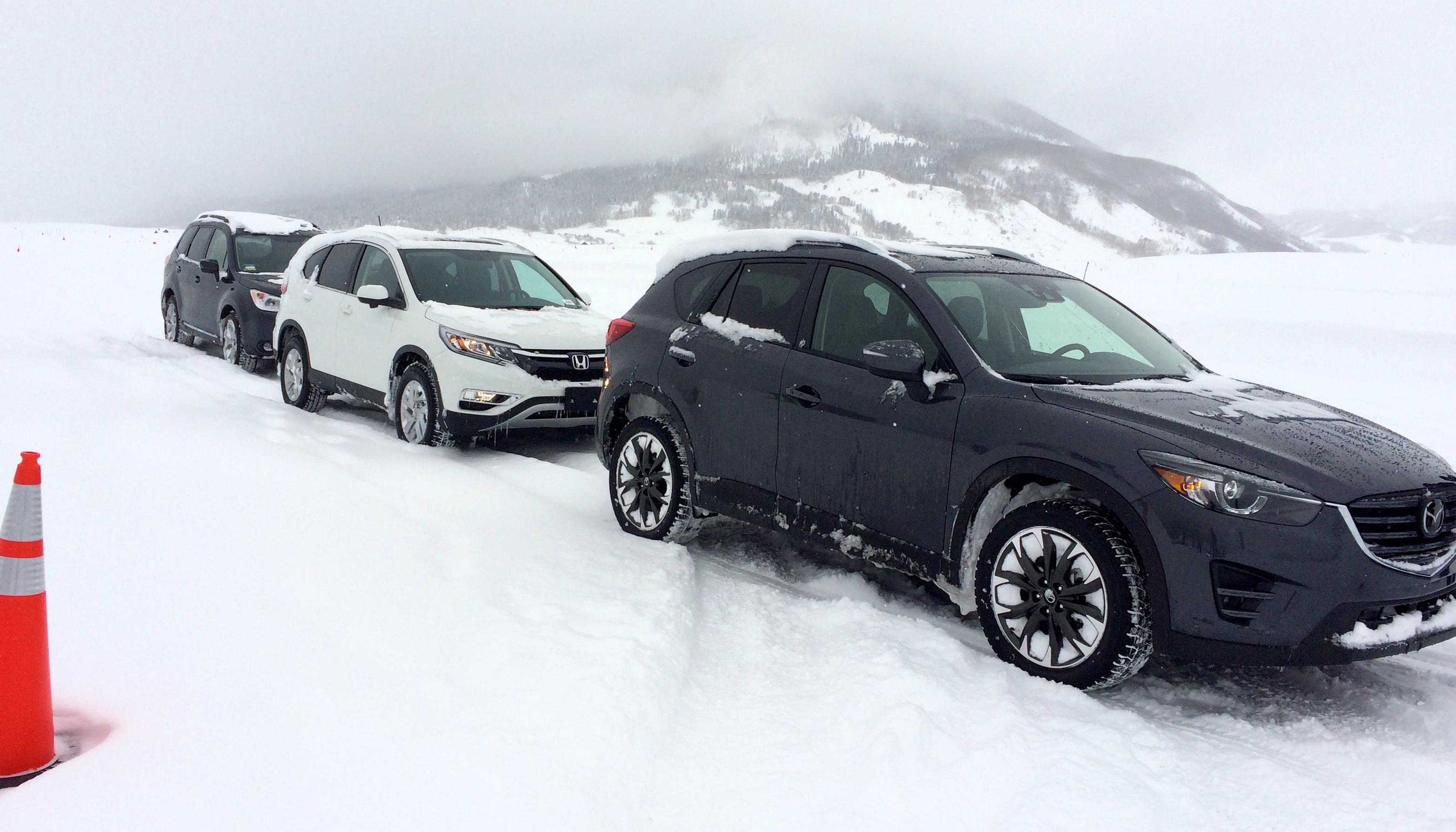
Secondarily, can we notice those differences without our eyes disappearing into our heads from pure enjoyment (and possibly oxygen deprivation)? “Where a lot of all-wheel drive systems fall down is you have that moment between when the front tires lose traction and the system engages,” says Dave Coleman, Mazda North America’s Vehicle Development Engineer.
Like all good scientists, Justin and I assiduously re-conduct the experiments – diagonal, half-vertical and occasionally inadvertently circular – several times to ensure trustworthy results for the advancement of universal knowledge. “You can’t fake this kind of smile!” he not-quite–academically observes in a volume that rivals the howling wind. The entire day is like this, though it started calmer.
As the name i-ACTIV suggests, this is interventionist technology.
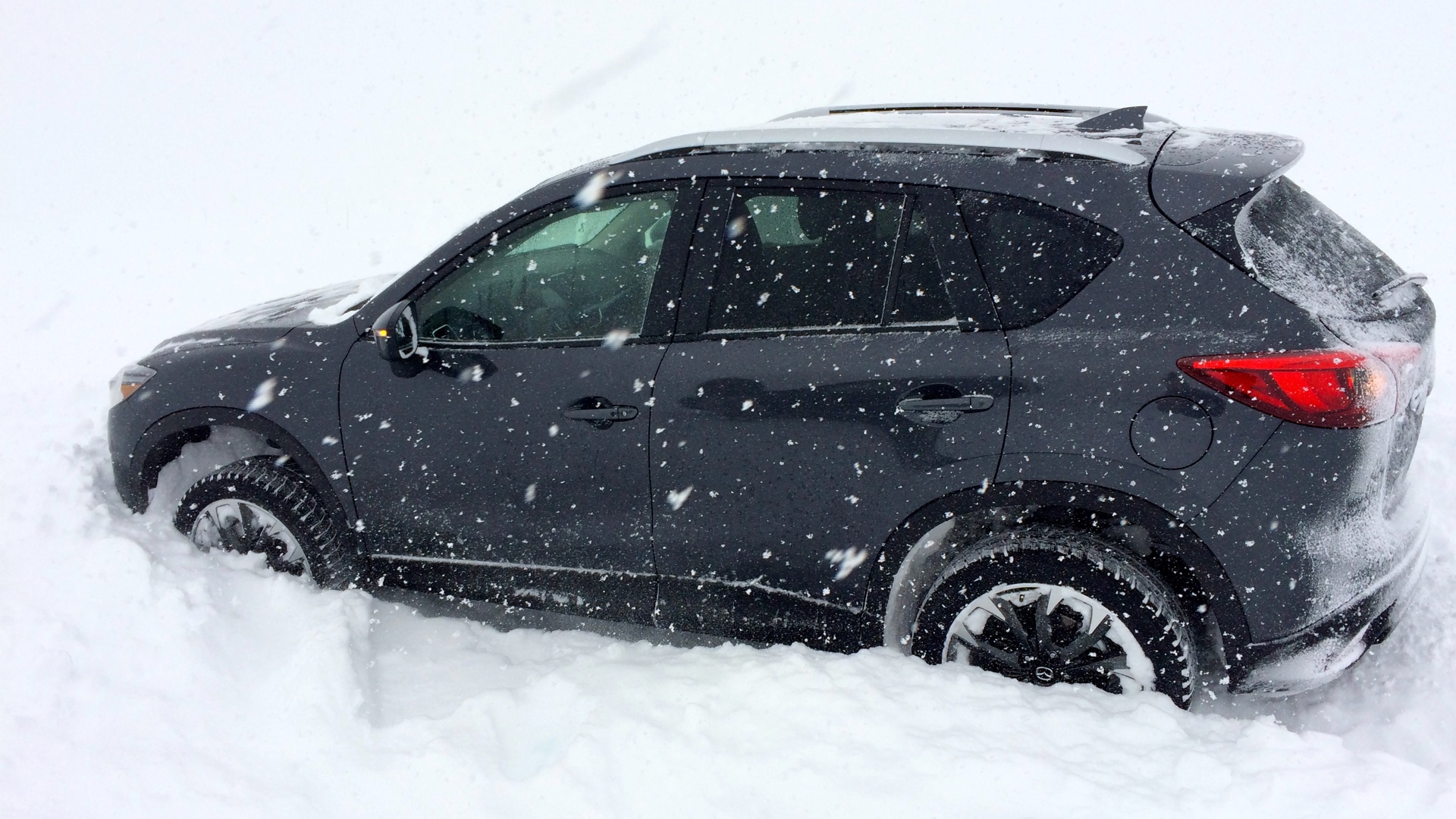
Earlier, inside and warm, Coleman observes “You have that moment of doubt when you don’t know what the car’s going to do. That’s an area where we (Mazda) focused very heavily.” He acknowledges that auto manufacturers are constantly playing catch-up with each other, creating cars with almost identical technologies. Then Coleman wonders whether they and their competitors could differentiate themselves more thoroughly – and for longer periods – through their philosophical approach to business.
Philosophical? Some in the room are rolling their eyes, but I rather like philosophy.
Coleman’s posits: why wait to react when you know you’ll need to react eventually? Mazda studies show a lag between the time when front-wheel slip begins and when drivers notice – machines sense sooner. Most AWD systems react when there’s slippage. Coleman says i-ACTIV intervenes those crucial microseconds earlier than other systems because it uses to data from other systems in the car to predict when the back wheels may need power, not waiting.
Perhaps his question lacks the charismatic panache and Shakespearean delivery of Tom Cruise’s moral quandary in Minority Report, but philosophically it addresses the same basic issue: the system could correct the error before the error happens. (“I smell Oscar!”)
How does i-ACTIV know? The car’s computer constantly monitors different, seemingly but not unrelated, information feeds like steering torque and angle, the outside temperature and even the window wipers. Why not pass that information on to the AWD system? Consider: If it’s hovering around freezing outside and the wipers are on, chances are very good the road’s slippery. If the front wheels are turning, chances of sliding out of control increase. Why wait until that happens if you needn’t? It’s a matter of philosophy.
Of course, out here, where the rubber meets the ice in Luke Skywalker’s frozen deathtrap, others are wondering what all this anticipatory intervention does to fuel economy? His philosophy speech comfortably over, Coleman proudly declares, “We have pretty much the lightest AWD system.”
Now, from philosophy to physics in microseconds: less weight simply means improved mileage because you burn less gasoline. Mind I haven’t weighed all three systems. Besides, we’re all pushing these vehicles very hard today, so no one’s going home with a mileage story.
Mazda hosts its Ice Academy just outside the town of Crested Butte.
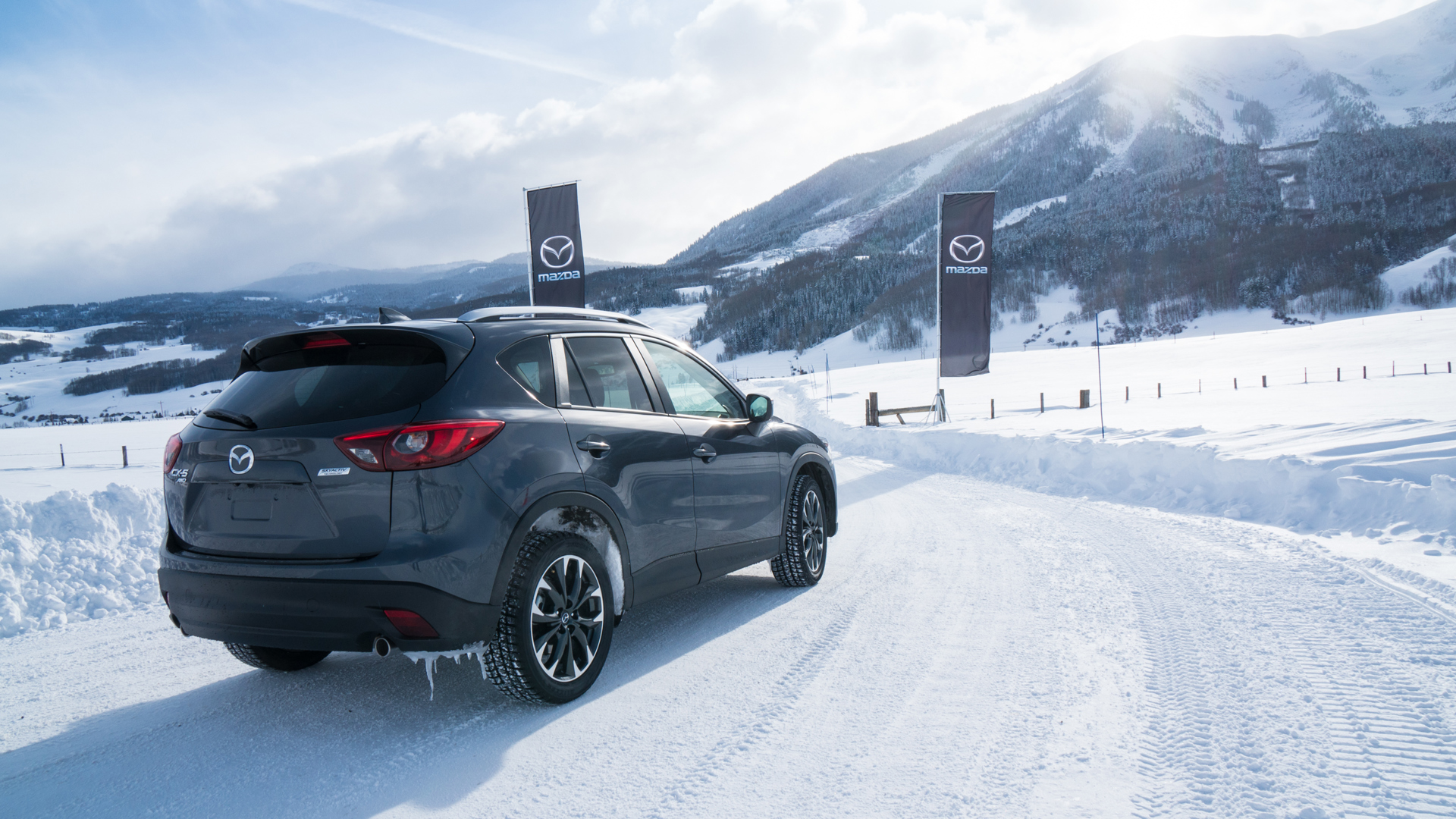
Actually, it’s pronounced beaut (we noticed that, too). A team of performance driving specialists have been crafting a series of testing courses for weeks. At least that’s what they’ve told us; like the other Academy, this event is #sowhite we’re blind to our own inadequacies. Pylons indicating the edge of these ice roads are disappearing under snow like Leo in The Revenant. By the time this Perfect Storm blows itself out later today, we’ll have had 30 inches of snow in three days.
Yes, inches (that’s 76 centimetres in dog measurements and over half of what Toronto experiences in an average winter). We barely made it here yesterday and now we’re experiencing the gale’s angry climax. Luckily earlier in the day, there were brief enough reprises between white onslaughts to see more than five feet in front of us – and even take some pictures. There’s even the odd glimpse of the nearby ski slopes. Colorado is rocky mountain beautiful but till now, for all we knew, we could’ve been in Saskatchewan.
It’s a Mazda North America event but Canadian and, rather bizarrely, Australian auto journalists are the guinea pigs (or breathless canaries – the air’s thin up here) on this first day. Most of the Canadians couldn’t wait to get outside and drive but several Australians look like overwhelmed schoolchildren, clutching a field-trip rope, terrified some yeti in a raincoat will emerge from the howling whiteness to abduct them.
The driving event entails five four modules.
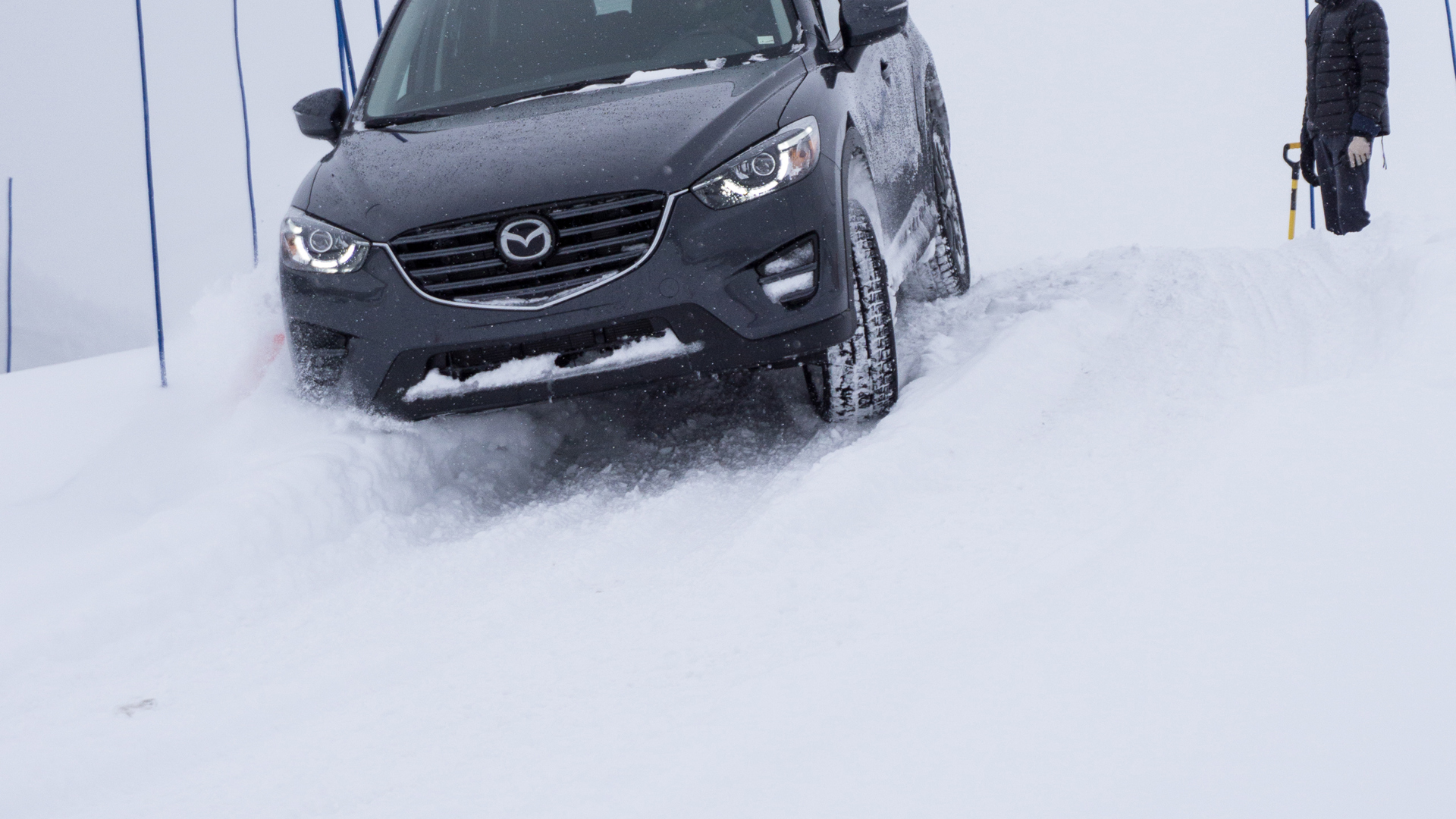
Branded by different coloured lanyards – contrasting with the so-white environment – four groups of approximately six participants move together from module to module. Our group is purple. Having been called outside immediately after orange, I tell the official “We prefer grape.”
- A dynamic handling course, featuring the aforementioned SUVs for a head-to-head comparison. It launches with a slalom of four quick dekes before a generously wide 180-degree turn of about 75 metres, then slowly back to the start. Rinse and repeat.
From the outset, I do notice the sheer control of the i-ACTIV AWD system fitted to this Mazda CX-5. Despite the technological intervention, it doesn’t lessen the pleasure of the ride in the Mazda, although the extra weight up front in the Forester makes for an easier (and more fun) drift in the wide turn. This is where you first came in with Han Solo.
Justin and I trade observations and questions: “Do you still drive back and forth to Toronto from Sudbury each week as part of your test drives?” I ask him, impressed.
“Yes, I’ve been doing it for 11 years now,” he placidly responds.
“Wow. You must see a few days like this every year. Have you ever been in an accident?”
“No, never once.”
Later, with the safety cones becoming snow cones, he buries the Mazda CX-5 in a fluffy white wall.
- An uphill ascent, again with the same three vehicles. In sequence, we drive each SUV to the crest of a little snow hill the Mazda team has made. (Heaven knows why they manufactured another snowy incline near the crown of the Rockies, but such is the obsessiveness of Japanese engineering.) Before the front wheels crest the hill, we stop, then turn the steering wheel one complete revolution before accelerating again.
This was where Mazda wants to make its point regarding predictive versus reactive AWD intervention. It’s when those fleeting microseconds are finally obvious. Naturally, they’re hoping their competitors would be stuck and they wouldn’t but obviously couldn’t be sure. “However if we get stuck here, too” says Coleman “at least all four wheels should be moving.”
We grapes are the first group to mount this white hillock and, despite the intensity of the gale, several senior Mazda officials crowd around to watch. Recognizing the cold temperatures outside and the angle of the wheel, the CX-5 immediately moves all four wheels and surmounts the hump. The CRV spins briefly up front first before its system kicks in and it too clears the hump. The Forester has no problem either. However after several rounds of all three vehicles, the launching spot is becoming icy. On its third attempt the CR-V is burning rubber and getting well stuck in. It eventually gets over, but only after digging some pretty impressive divots.
- An untimed and alternating rally with Mazda CX-3s on all-season Yokohma Avid and Bridgestone Blizzak winter tires. Much longer than the first course, this track was shaped like a huge boomerang, but punctuated with constant slaloming, occasional angular camber, plus two downward sloping stop boxes. We were instructed to brake hard from maximum speed (on this tight snow course that was typically about 30 mph but I once achieved a miraculous 30) then see how far we slide past the box’s boundary.
We repeated the experience in both cars three times. Most of us blew the box at least twice on the Blizzaks. All of us slid far beyond it on the all-seasons. The difference between the tires was shocking. The point was not news but impressively made: if you drive much in winter and don’t want to kill yourself or others, whether it’s snowing or not, you really ought to have winter tires.
- And an ice track featuring MX-5s, aka Miatas, the adorable Mazda roadster that took the world by snowstorm when introduced in 1989. Starting at $32,000, it’s the Porsche Boxster for the rest of us. The contrasts are hilarious. This suite of fire-engine red MX-5s is as out of place here in this snowy cyclorama as a diverse face at the Oscar podium.
So why has Mazda hauled these summertime toys up here to God’s snowy basement? “Because why not?” the Mazda PR people all chant – another philosophical breakthrough. And we all put the roofs down for the same reason. Why not?
It’s a short course, mostly slaloms, with one tight 180-degree bend, followed immediately by an 80-metre sprint towards an impossibly acute turn of about 200 degrees, finishing thereafter in a stop box. Tada! Everyone drifts throughout the course, most of us oversteer at least once on the penultimate turn, spinning out.
There’s no way we grapes get as much time as the first group, the oranges, but at 9,000 feet, you can’t fight Mother Nature – not for long anyway. Surrendering to the weather, they call us inside for lunch and a brief presentation by a Bridgestone representative – redundant by now – on the need for winter tires and their uniquely designed rubber compounds. One simple rule: if you can see your breath, you ought to be driving on winter tires.
The final stage of the event has to be canceled – an on-road course with Mazda CX-5s and CX-3s (yes, it would’ve been on Blizzaks). The storm’s tail end is kicking up nastily for a couple more hours in the afternoon before pretty much blowing itself out. It’s so white out, most of us probably couldn’t even find the roads to rally on in the first place. Probably not even with GPS.
Epilogue: Next day, the storm has passed.
It’s still a bit misty but we can actually see much of the mountains surrounding this unhealthily high town. There’s more powder than a ‘78 Fleetwood Mac concert and I’ve stayed on an extra day to take advantage of this unique skiing opportunity. But despite the massive dump of snow the roads are easily drivable. Take a lesson, Hogtown!
On the day after that, the skies are completely clear; the mountains are not only visible but sharp knife edges against a steel blue sky; the roads are not only completely cleared of residual snow, “they’re dry enough to take the Miatas to the airport”. It could be a bit like The Italian Job. The suggestion falls on deaf ears.
